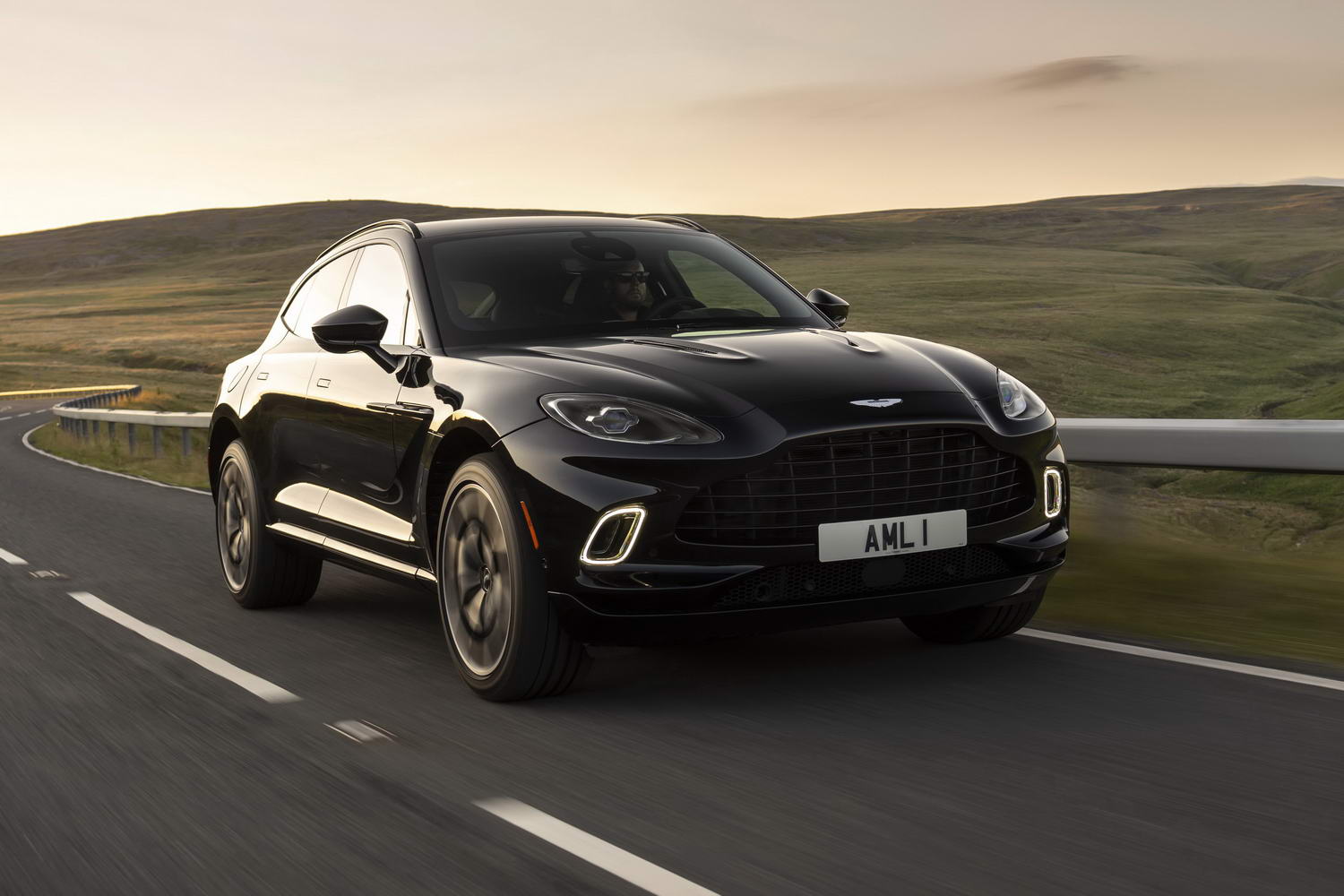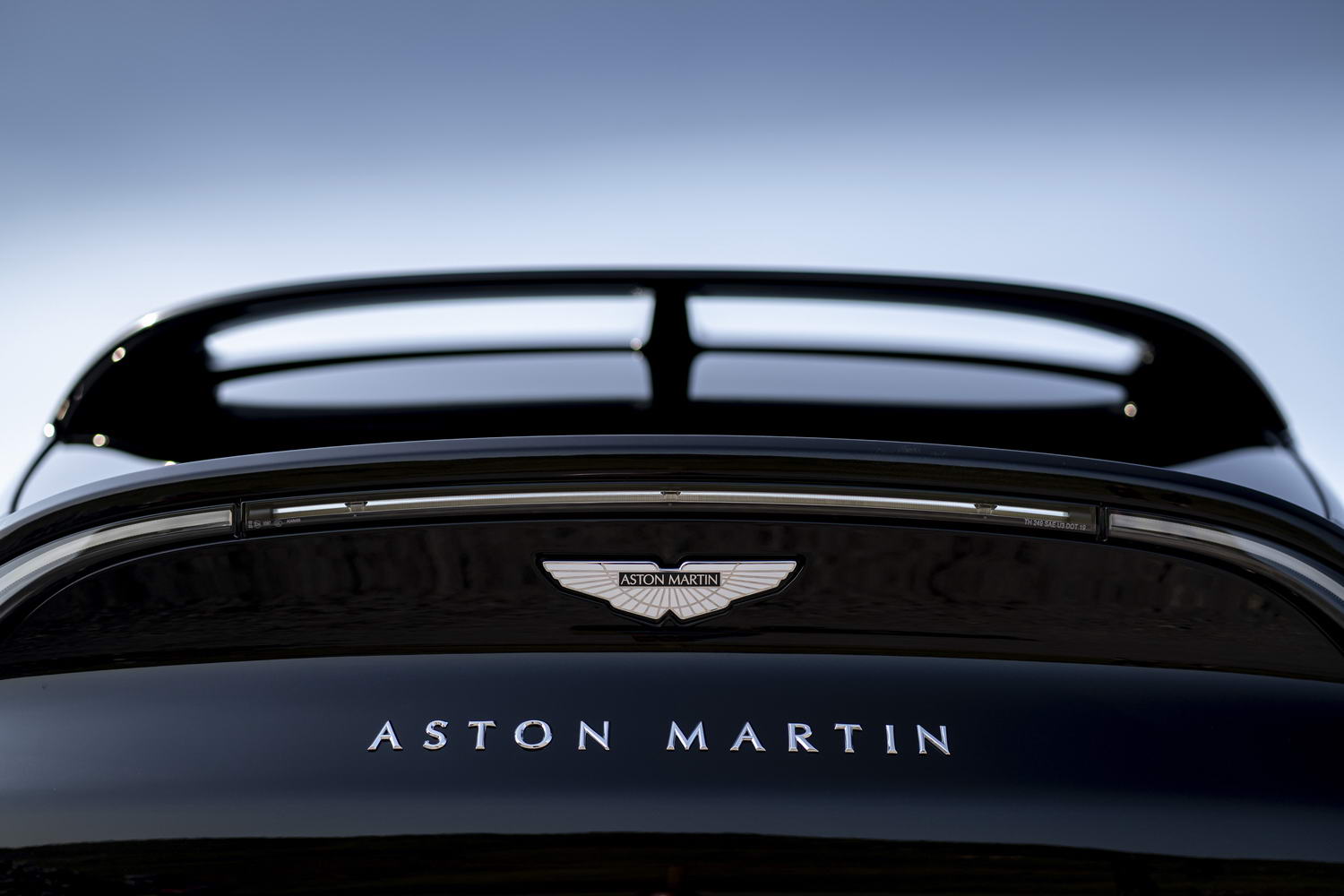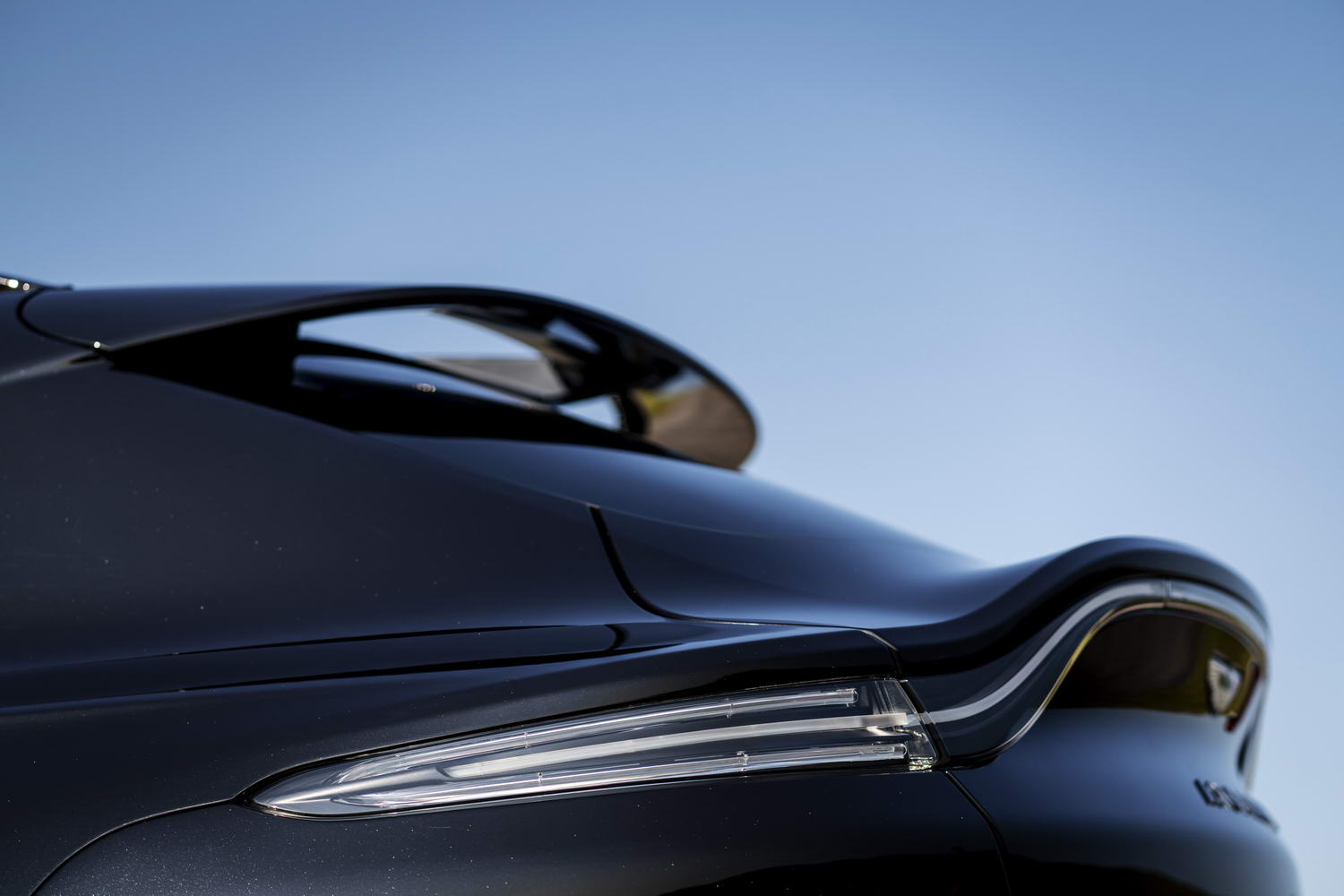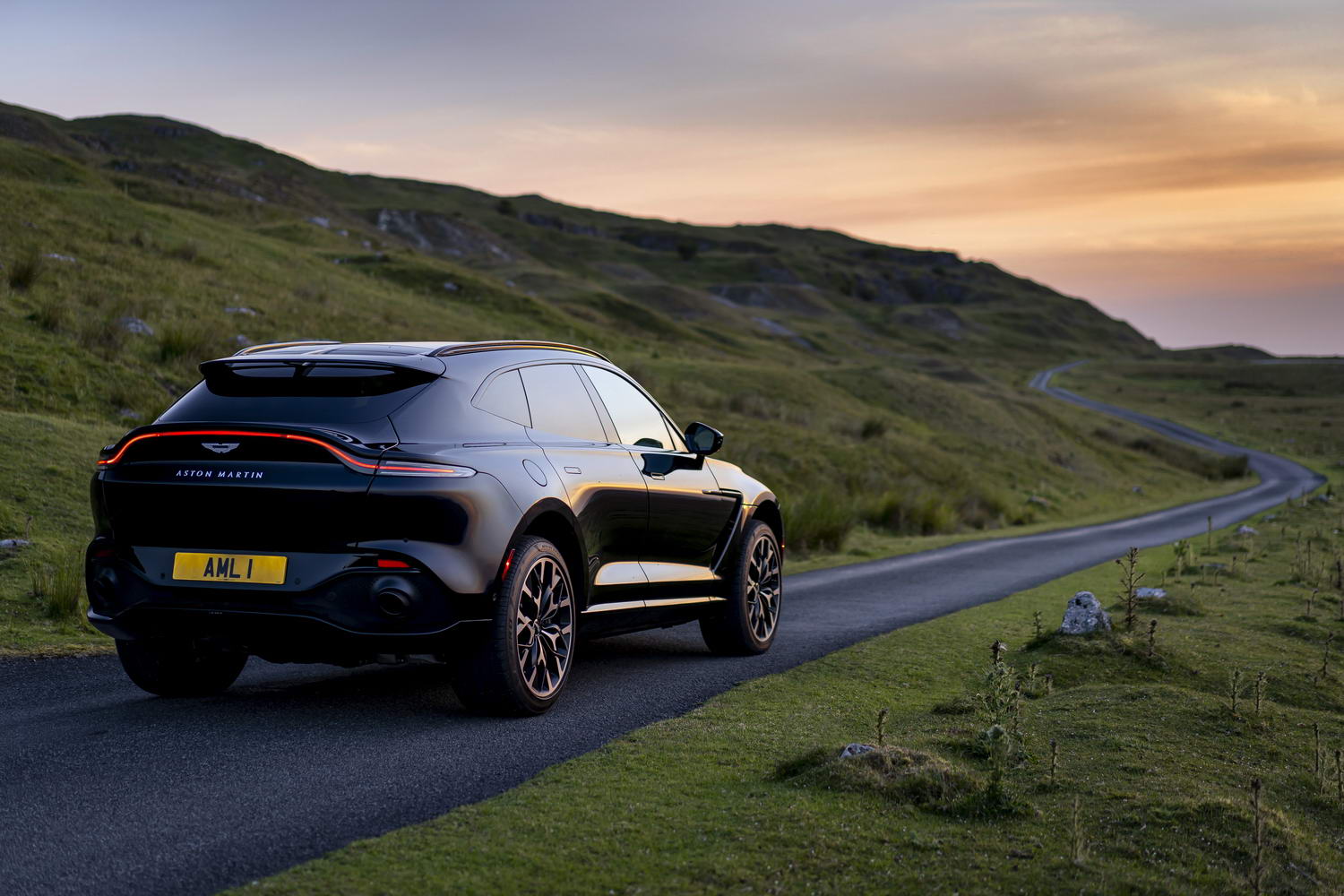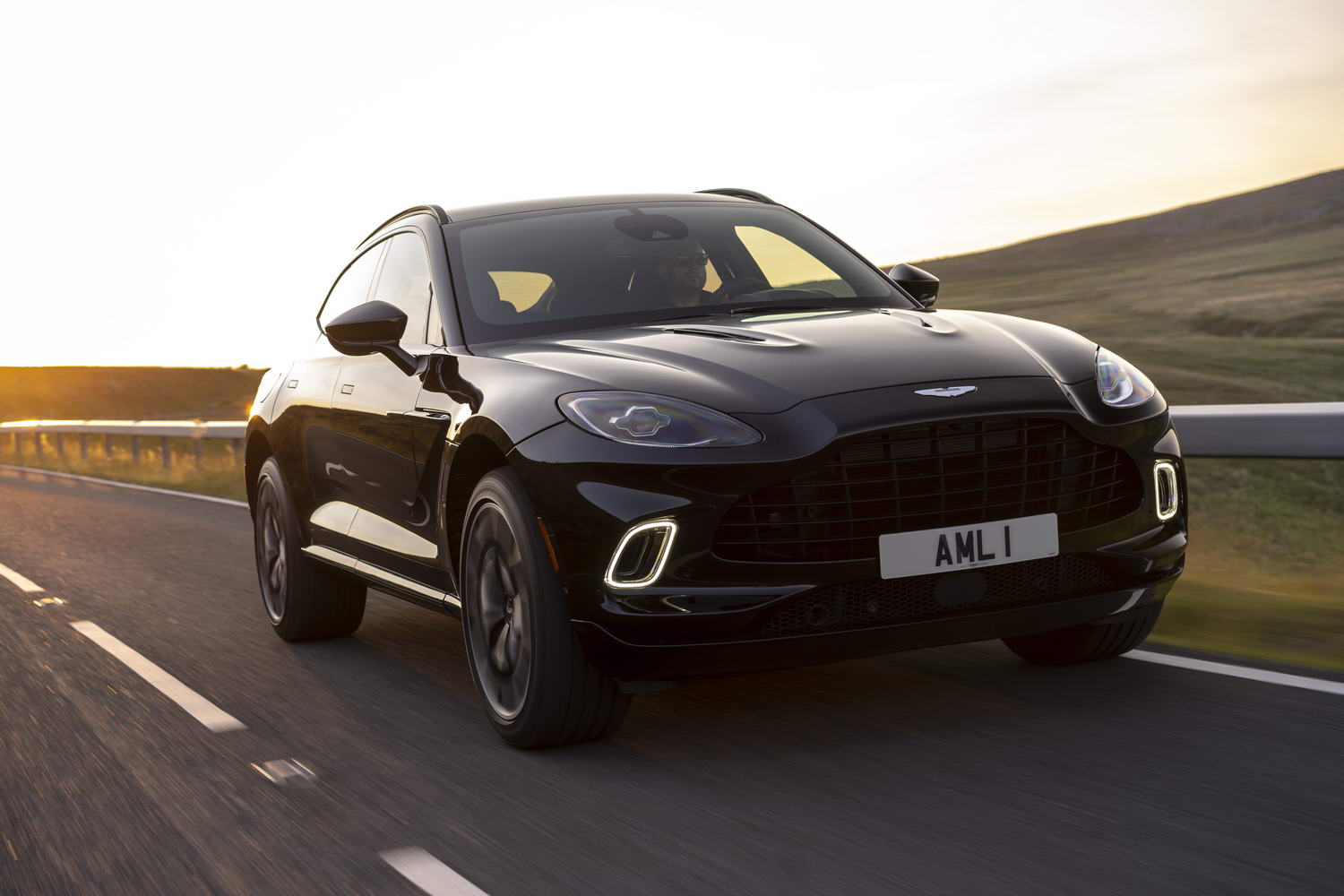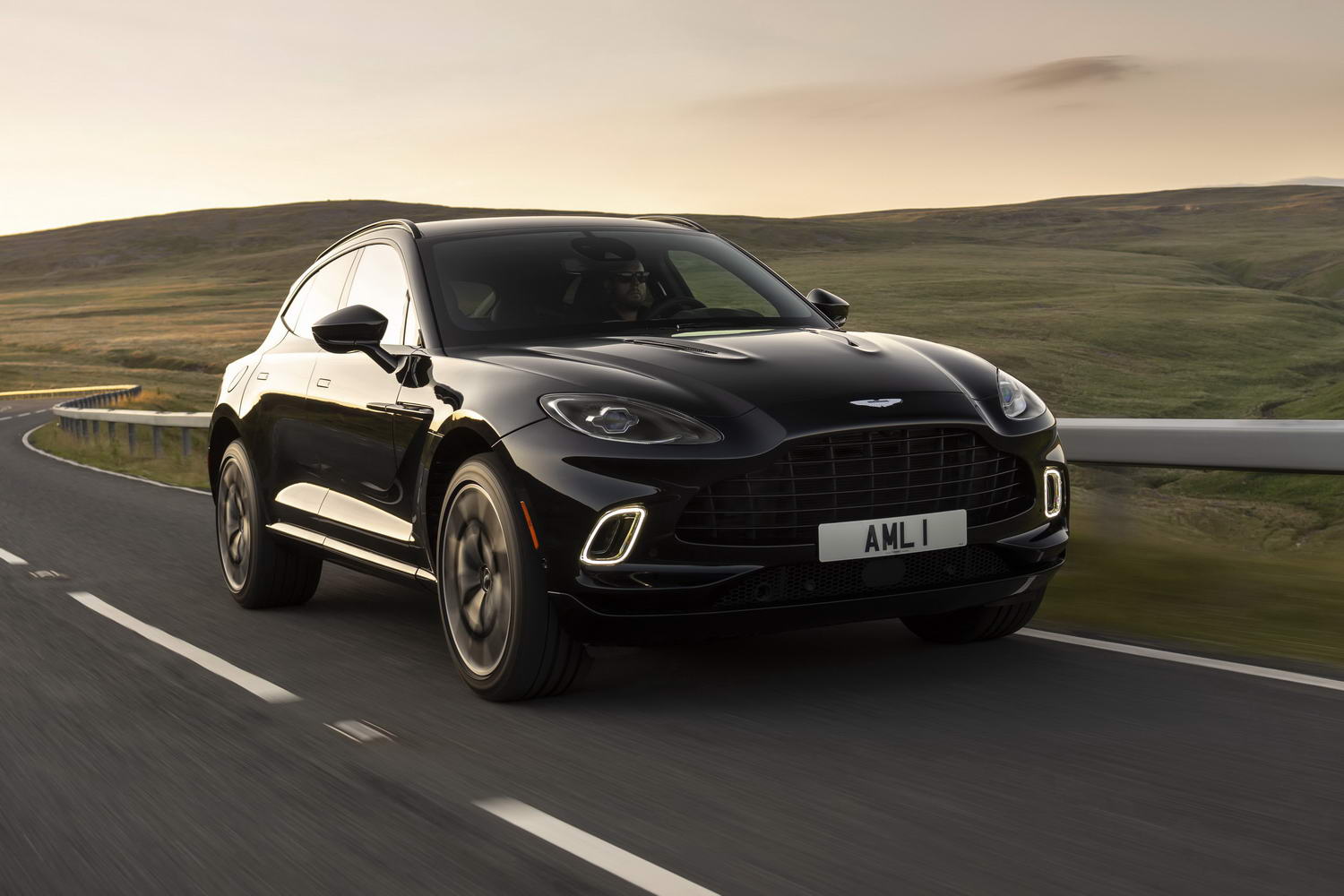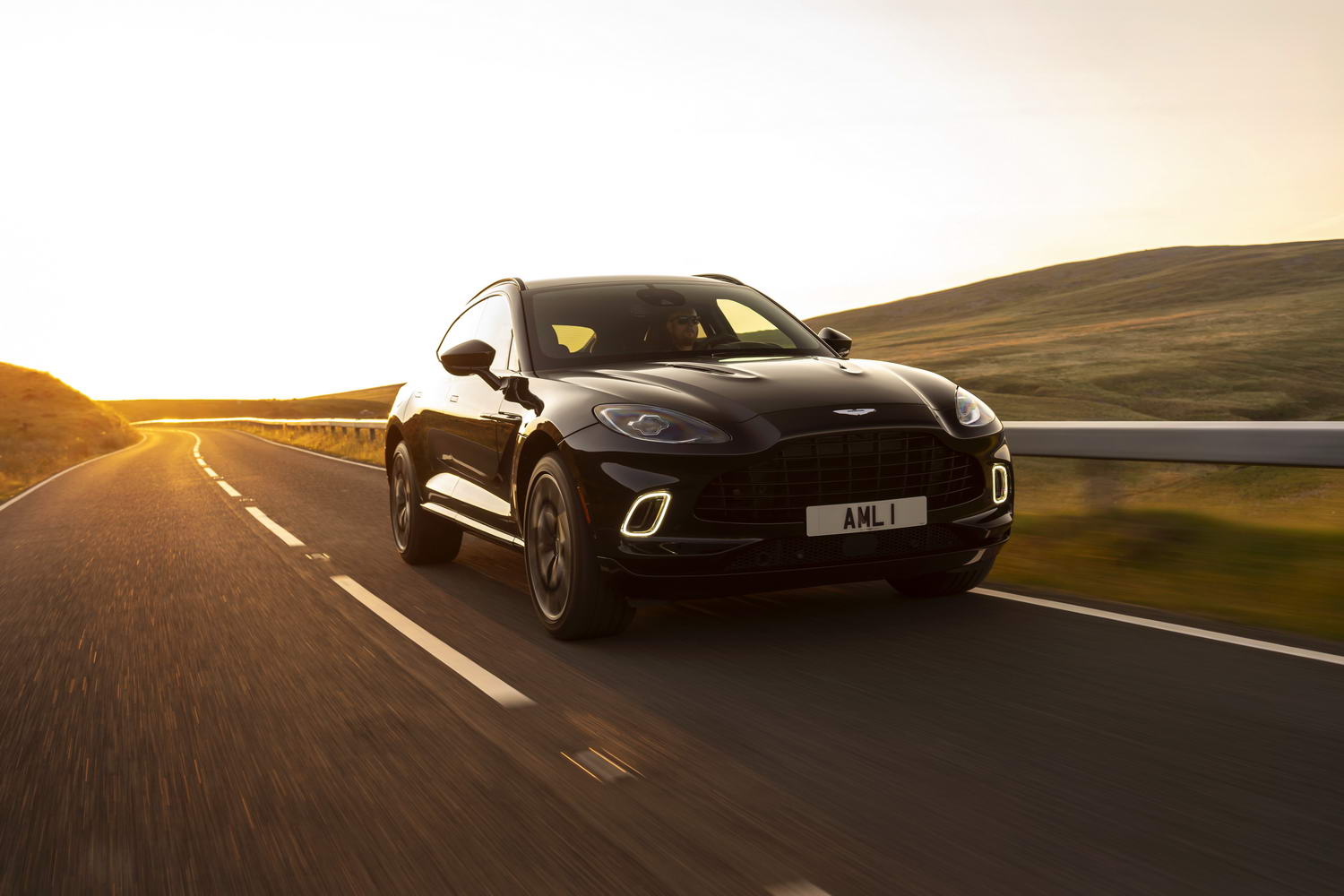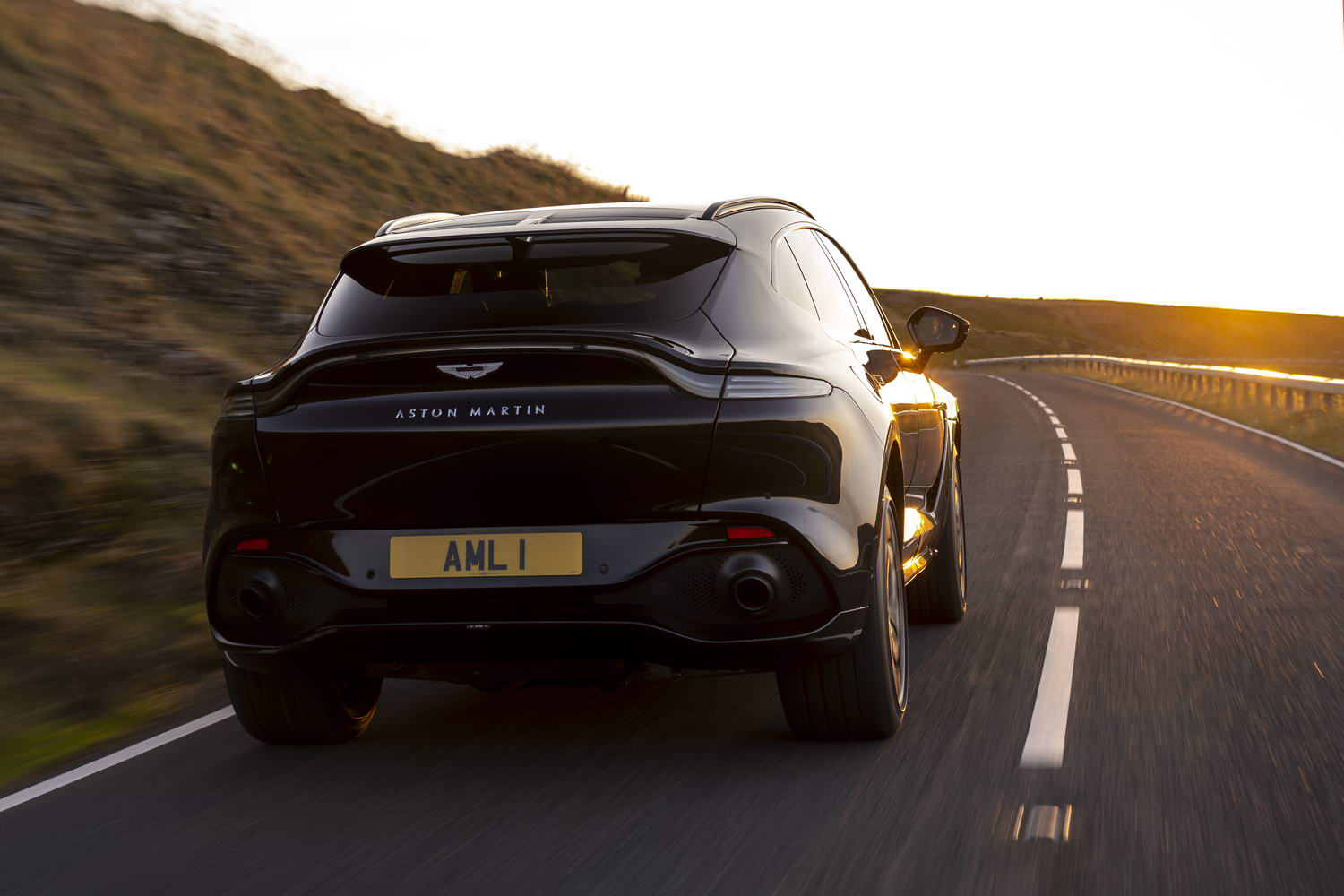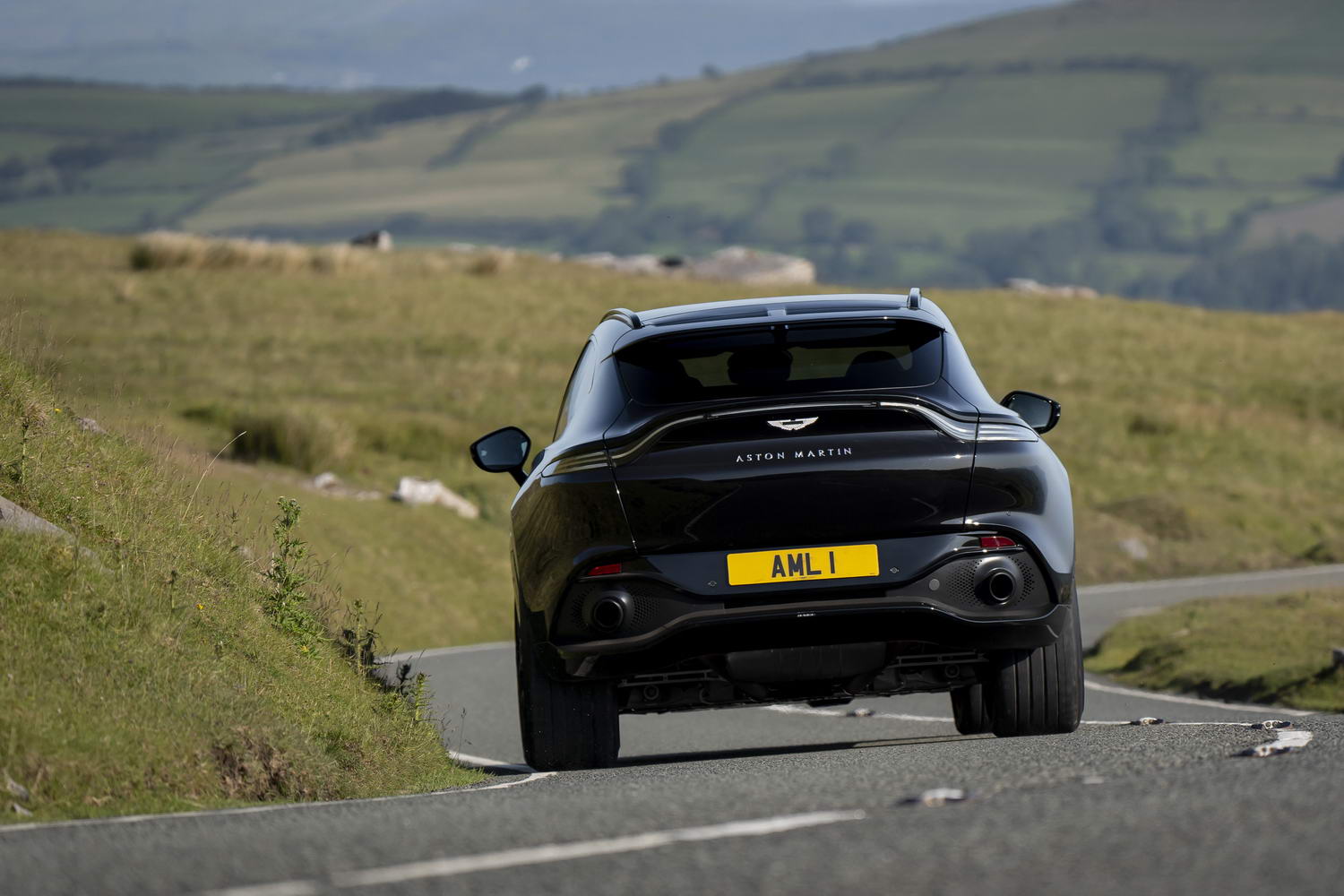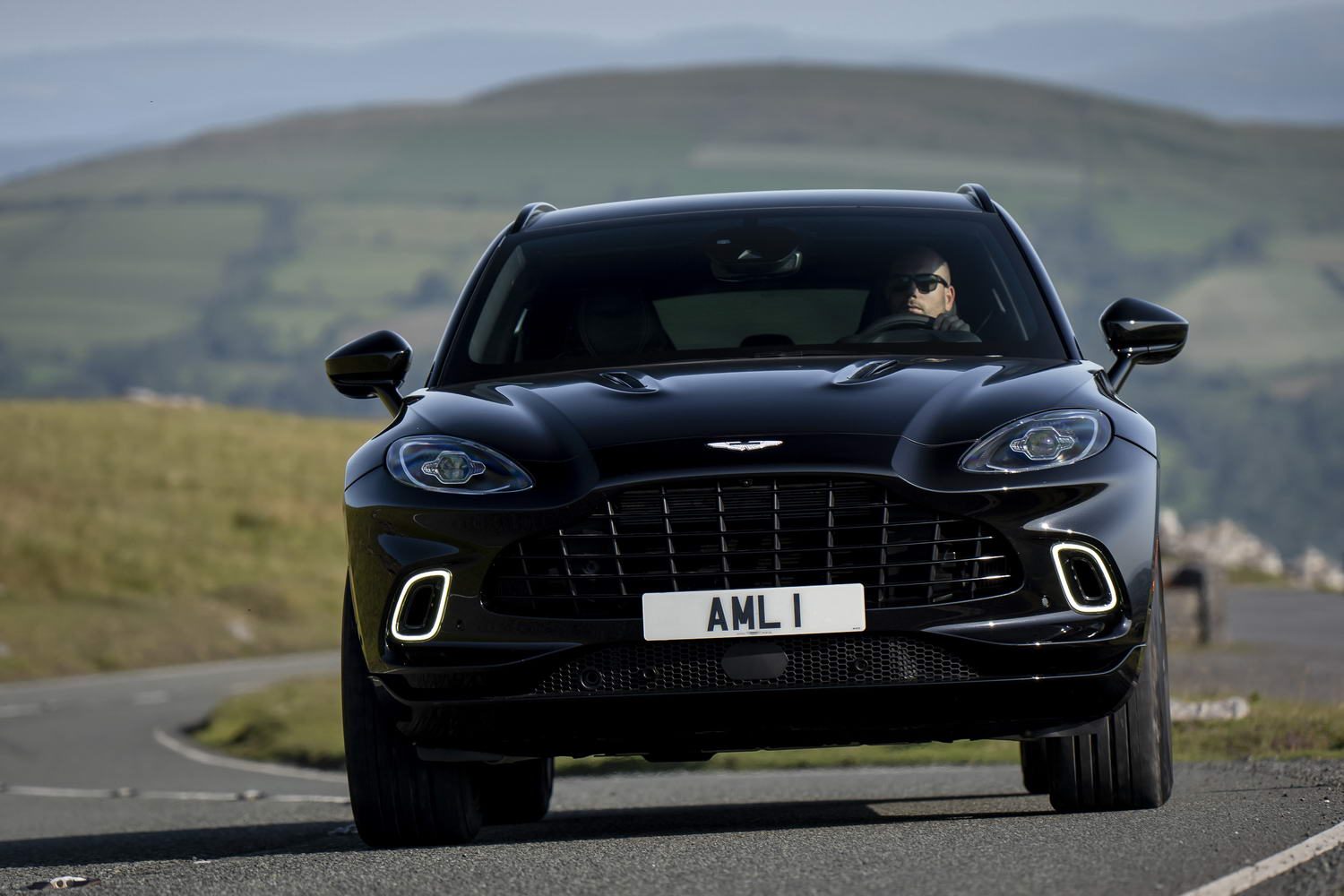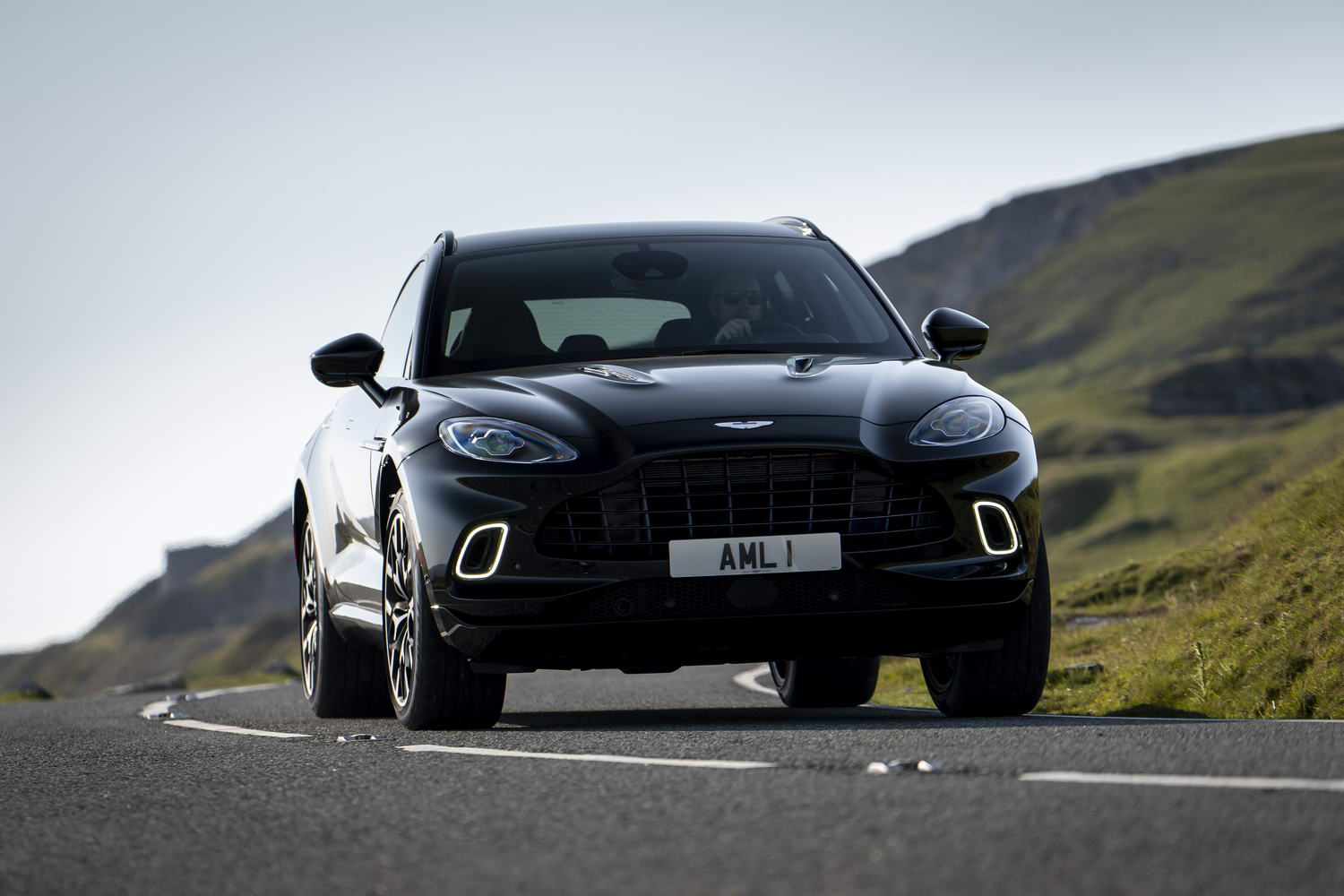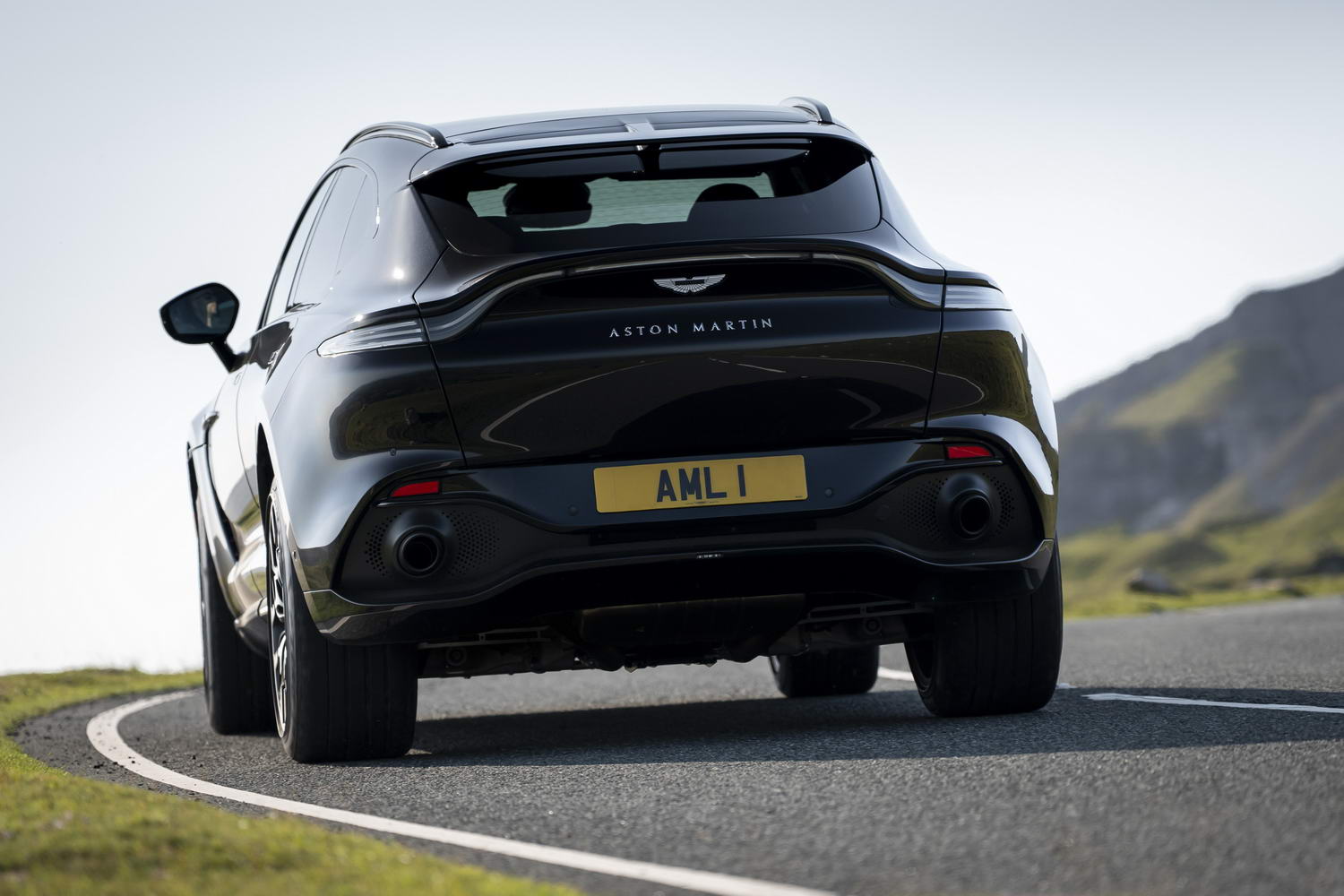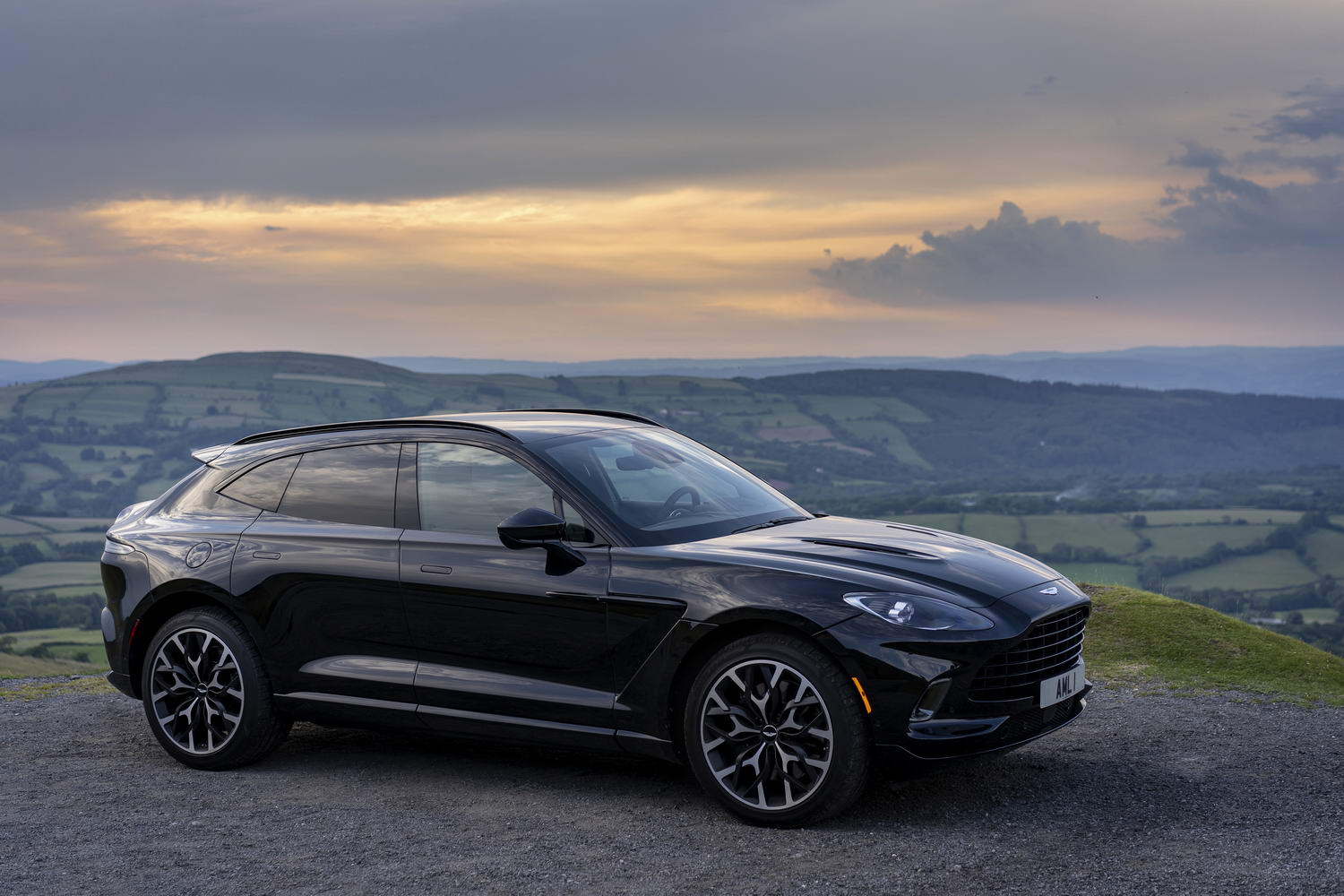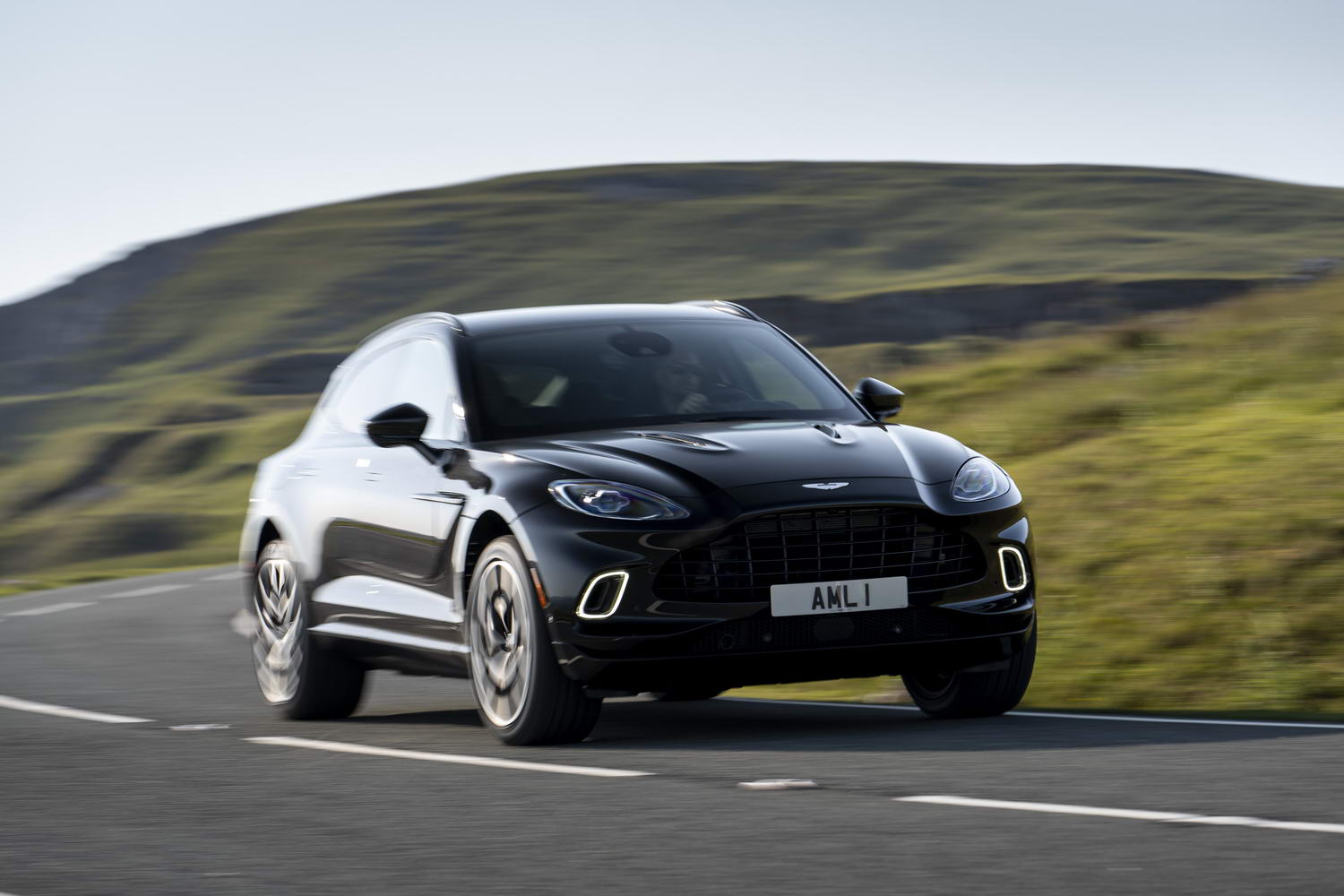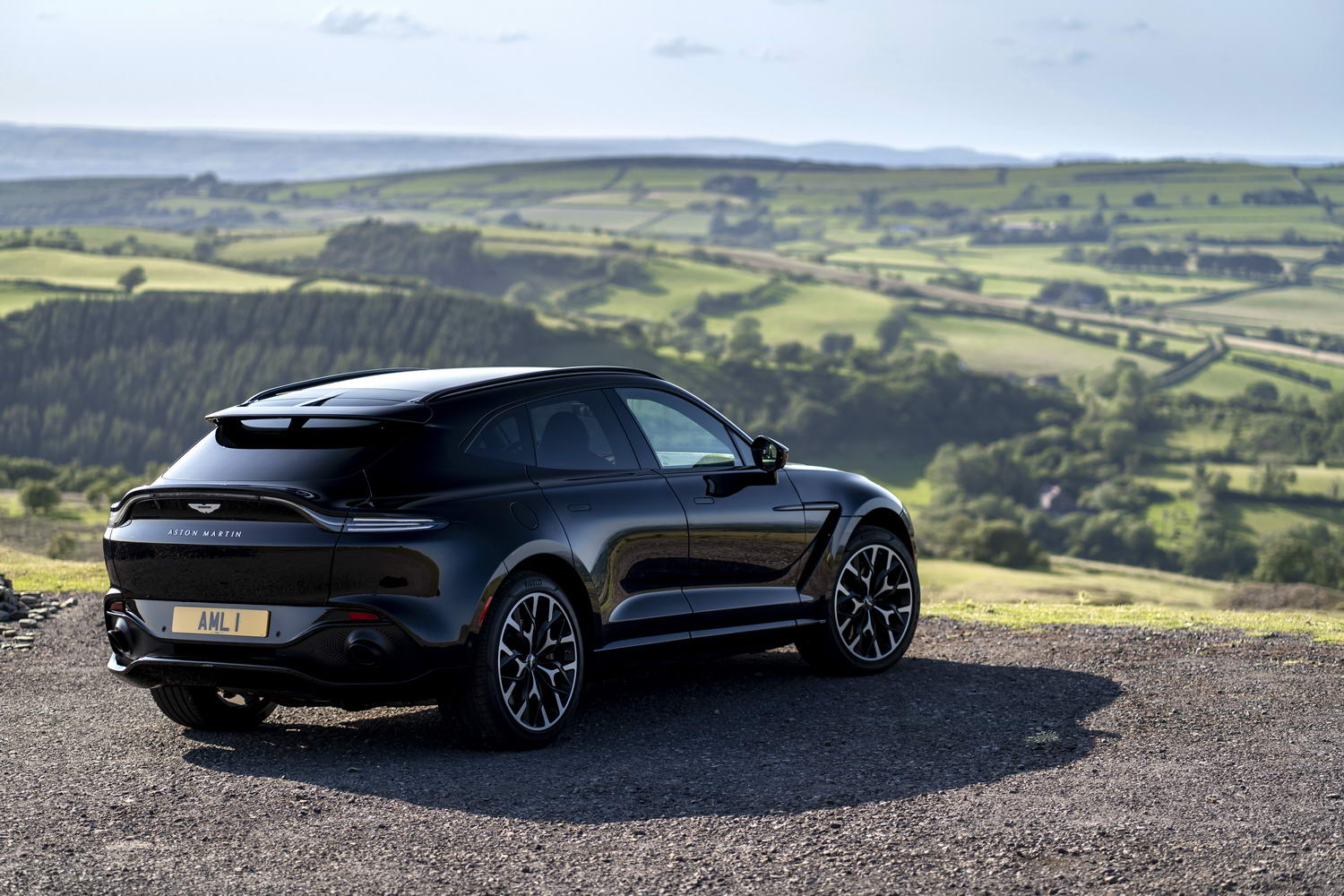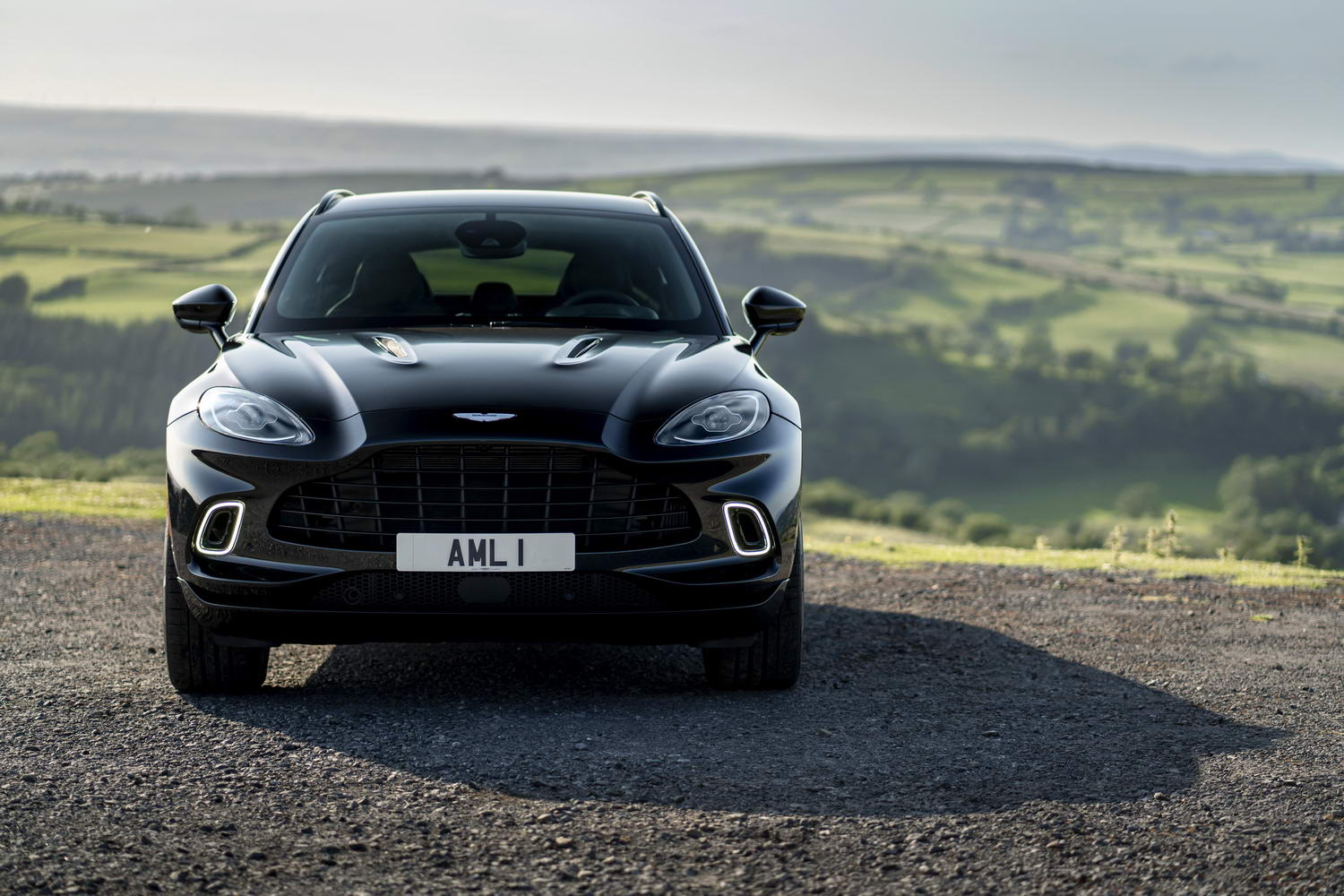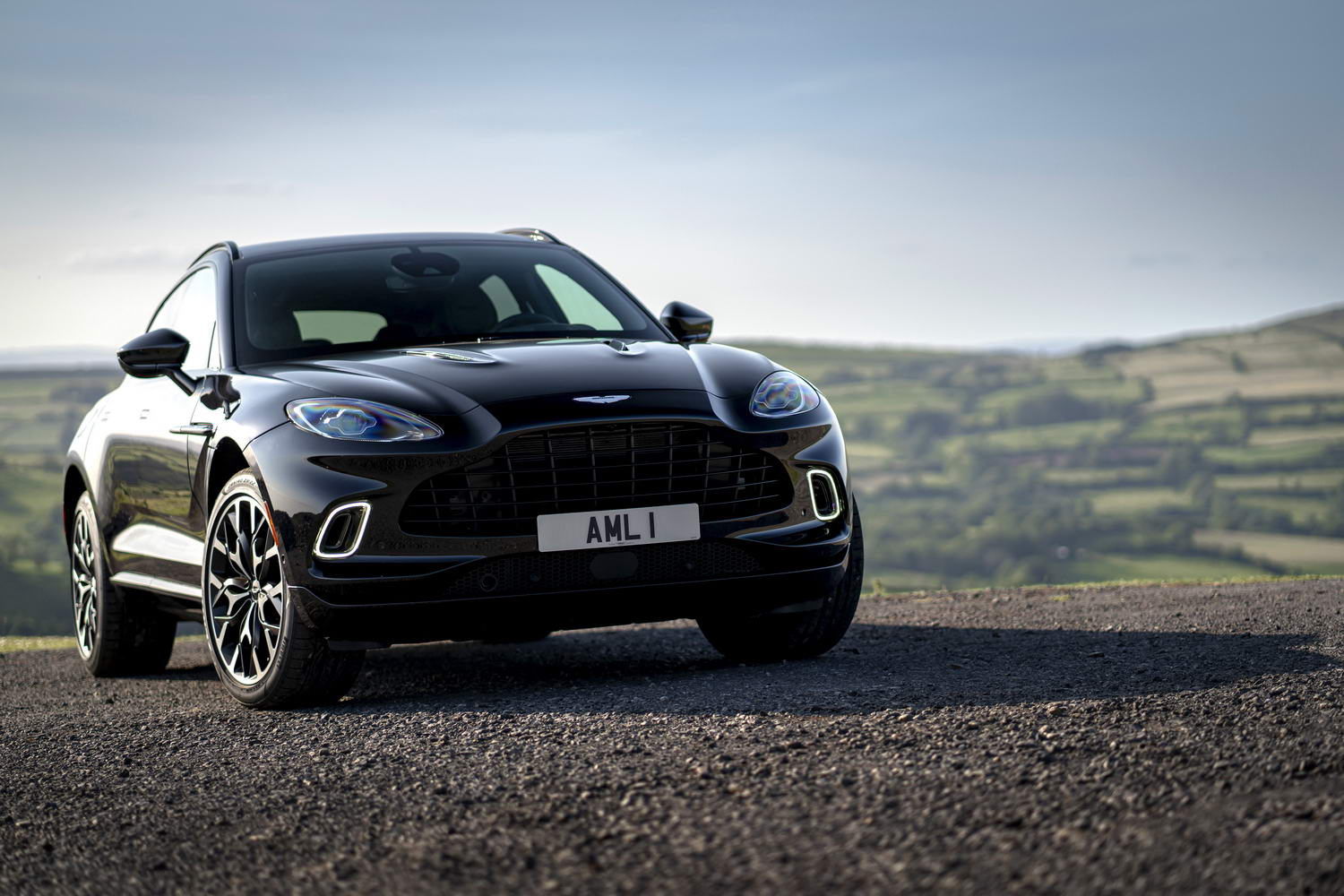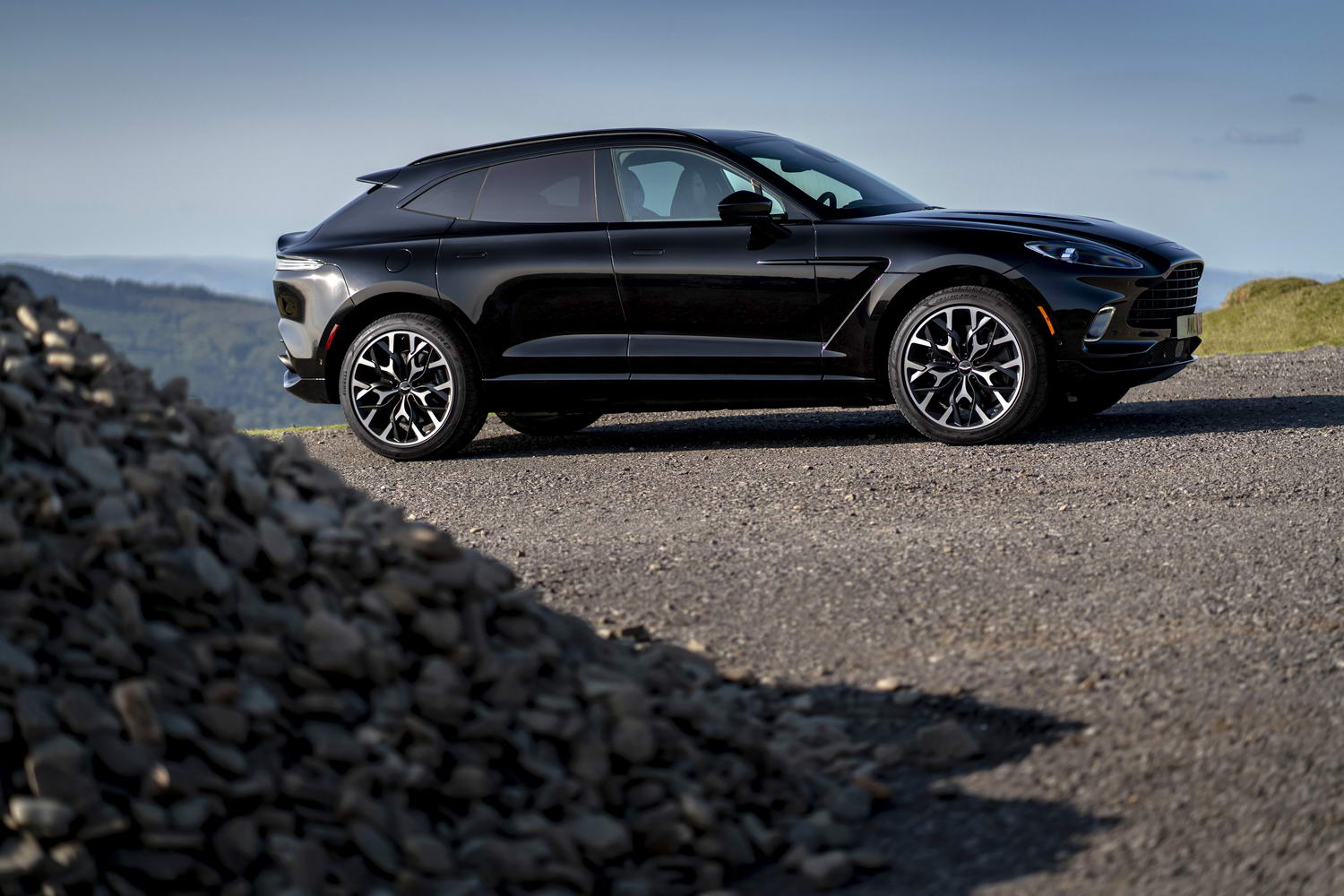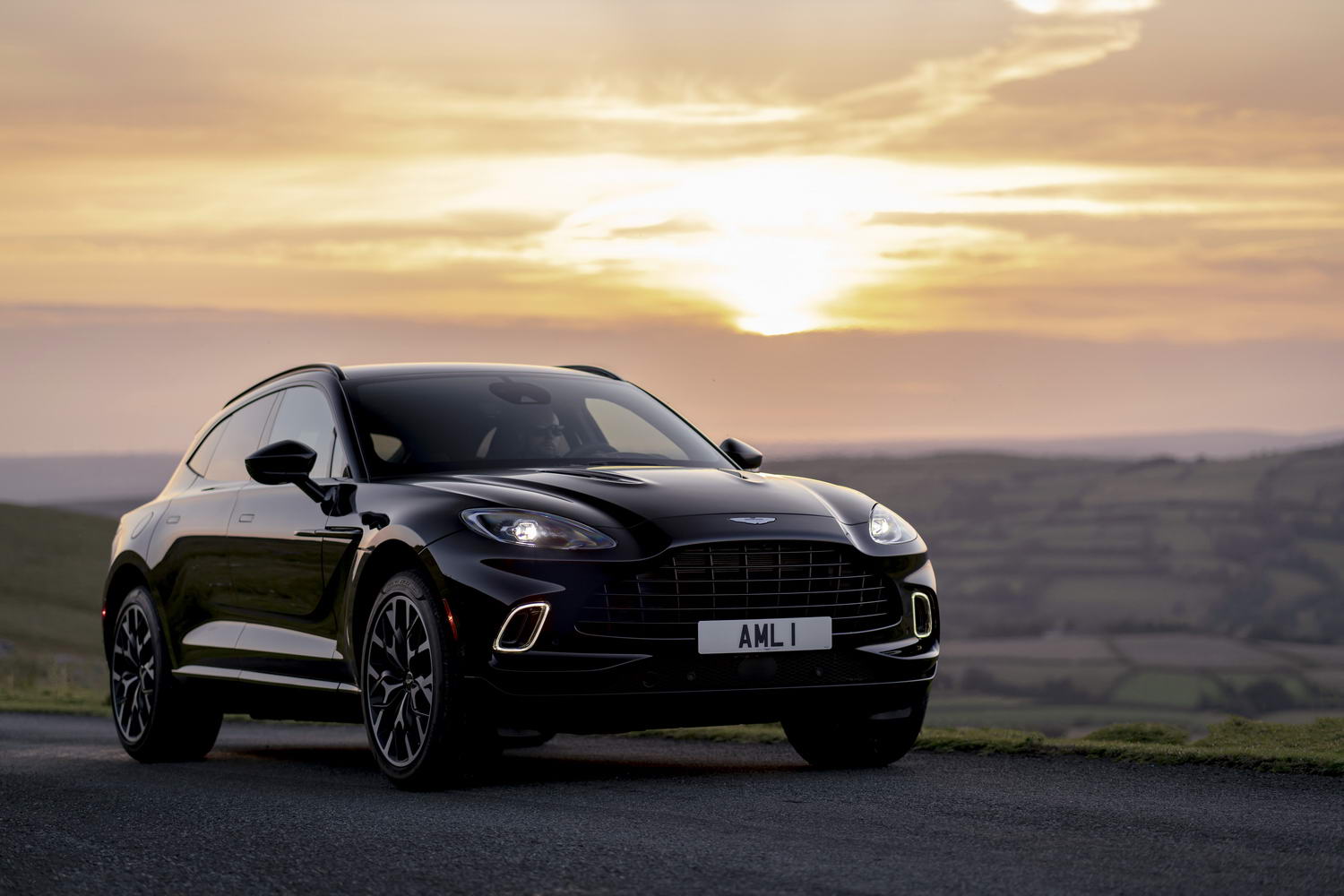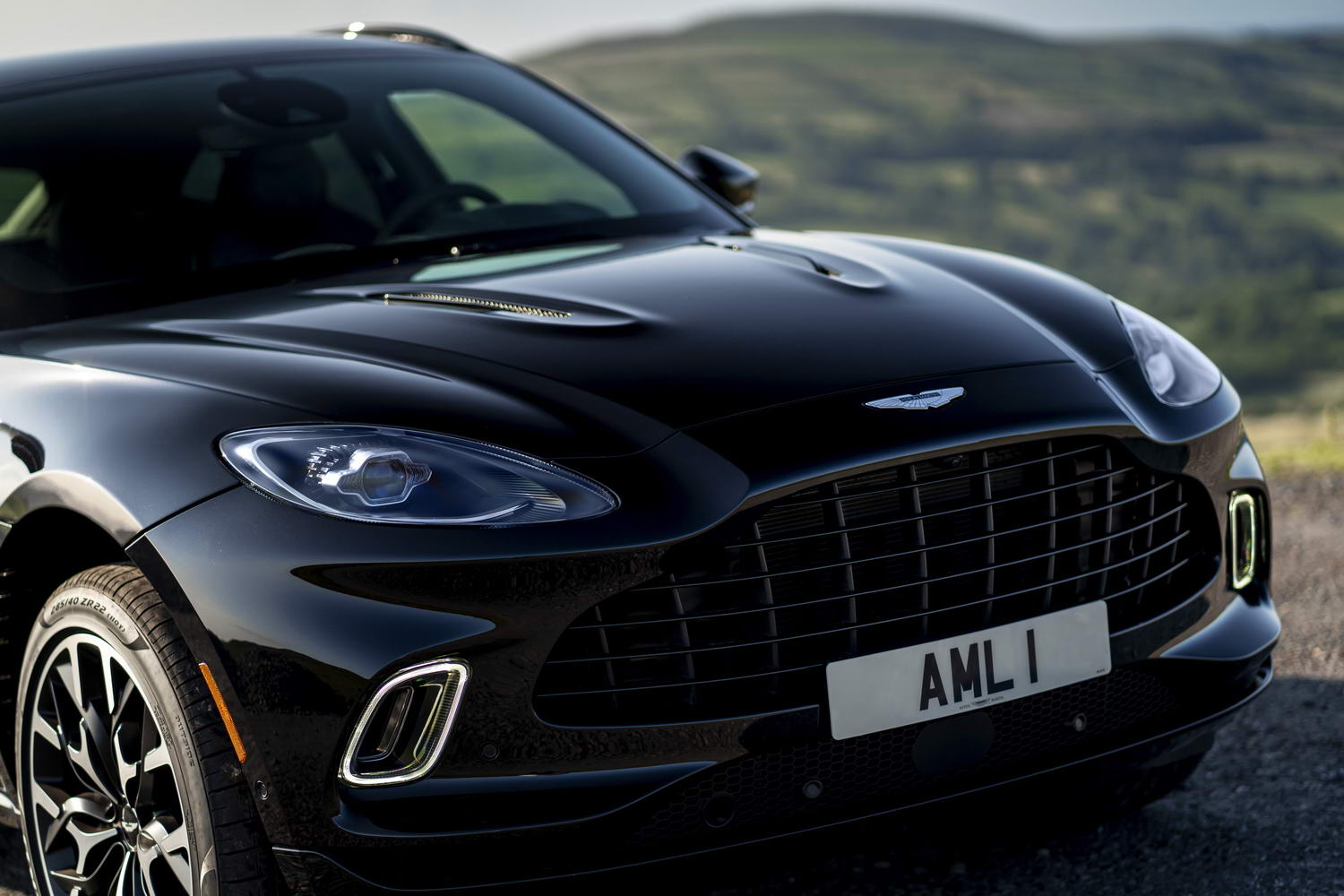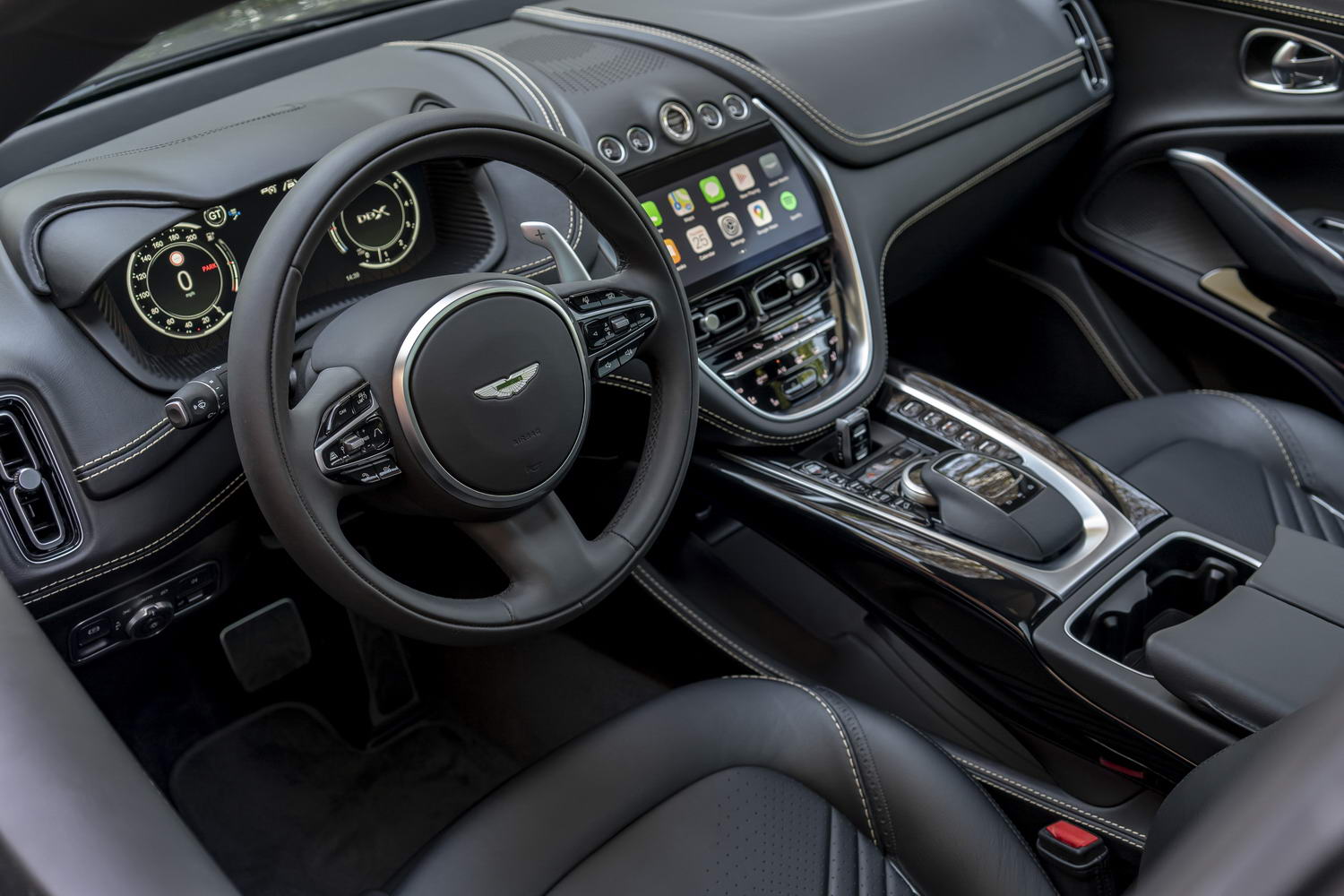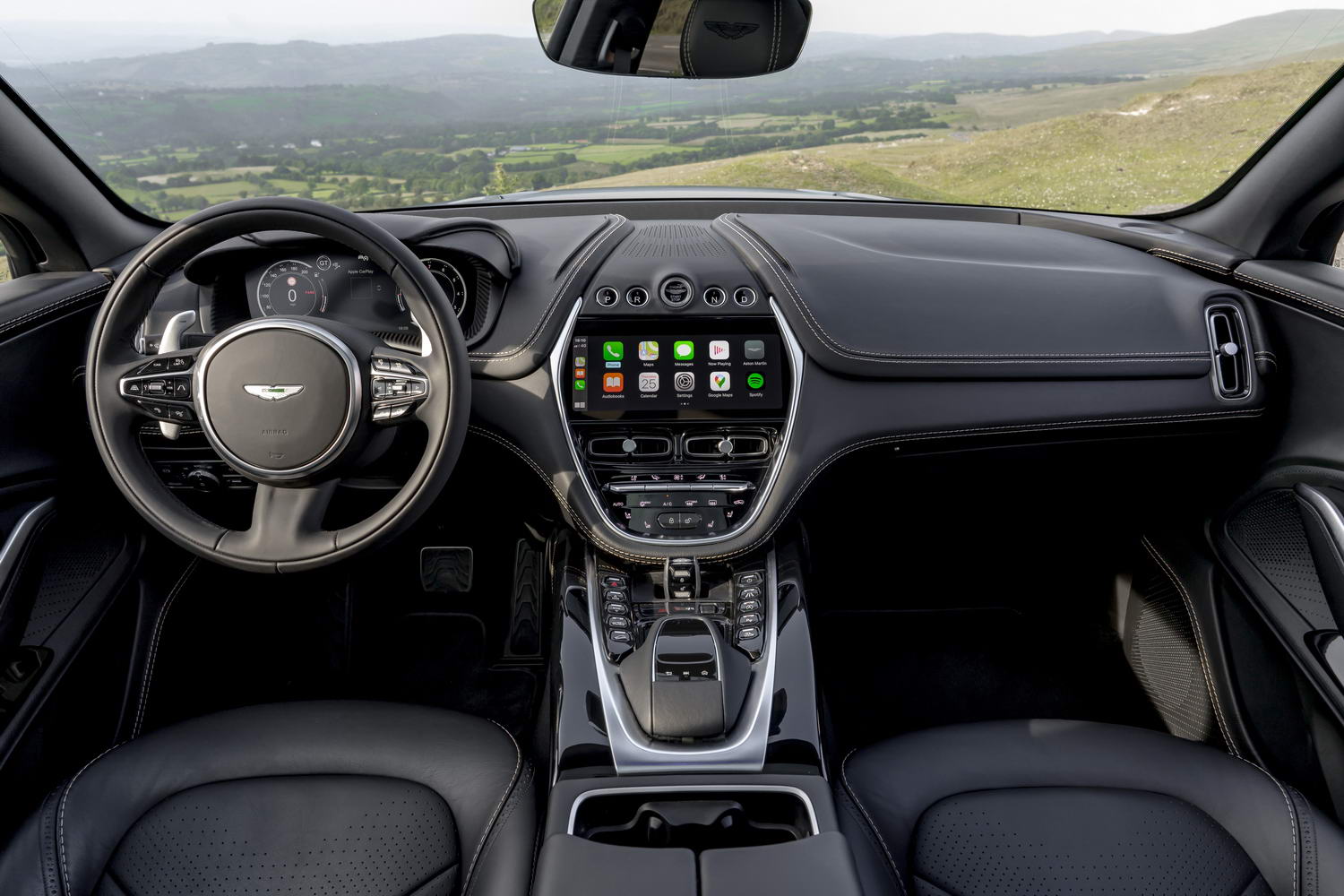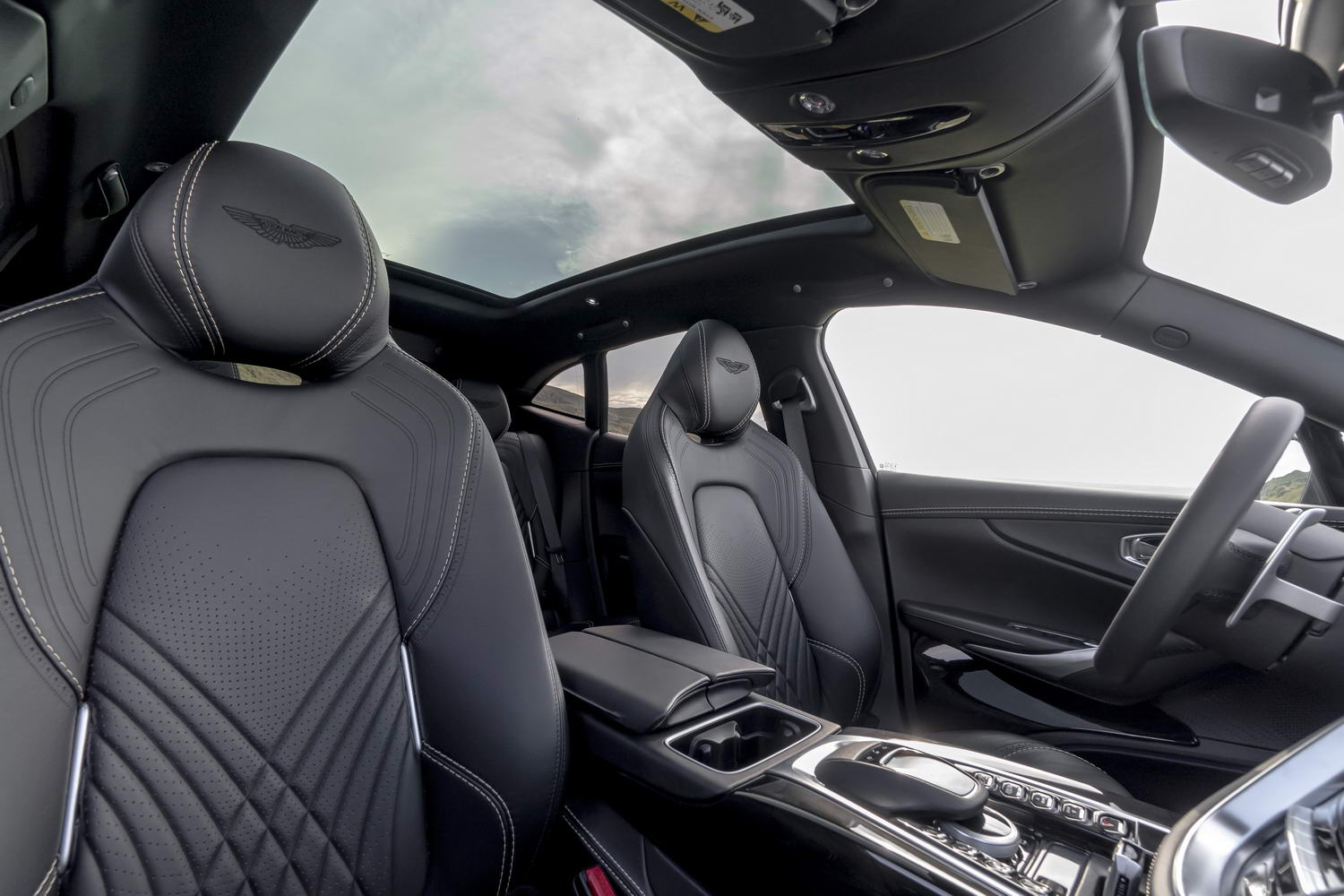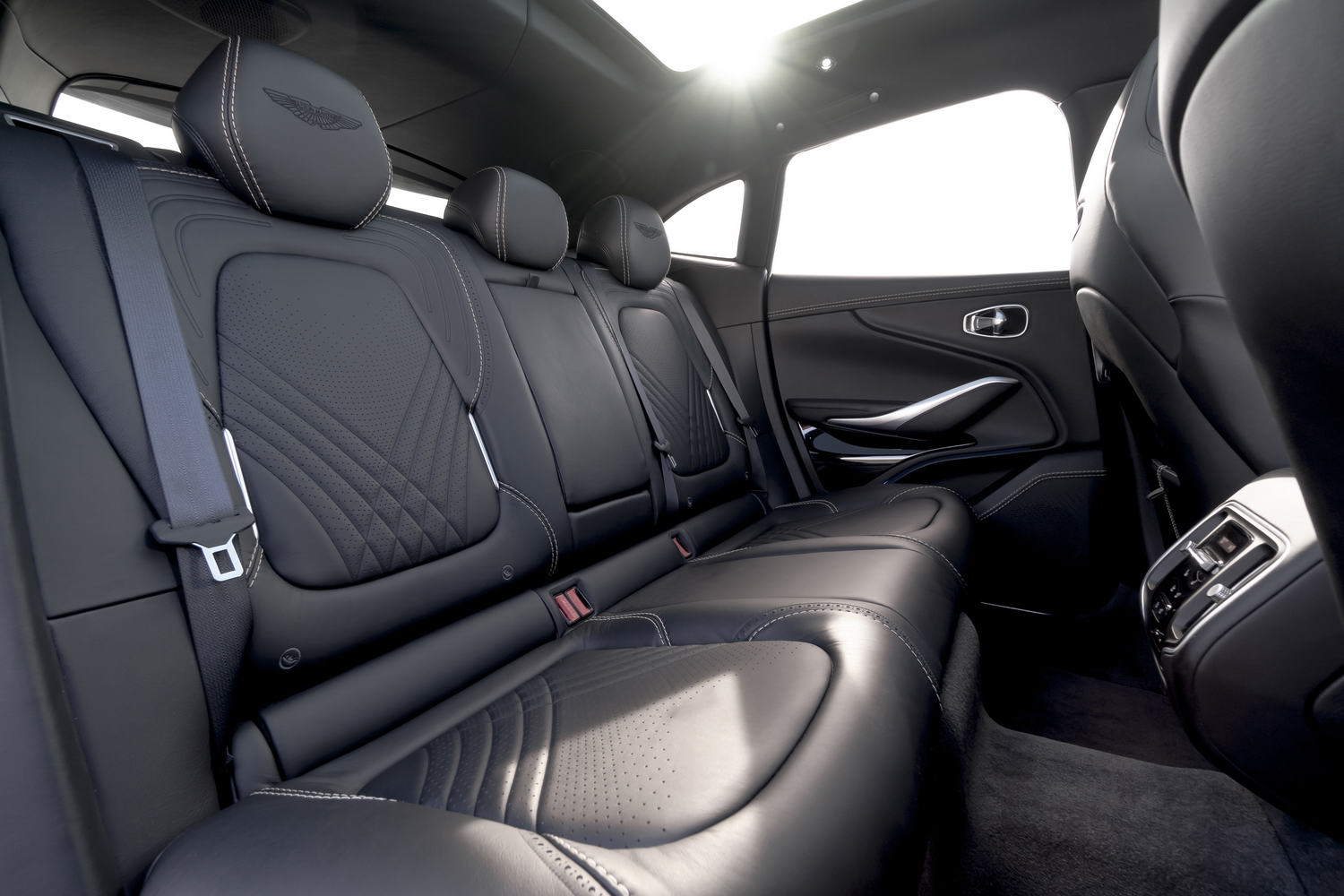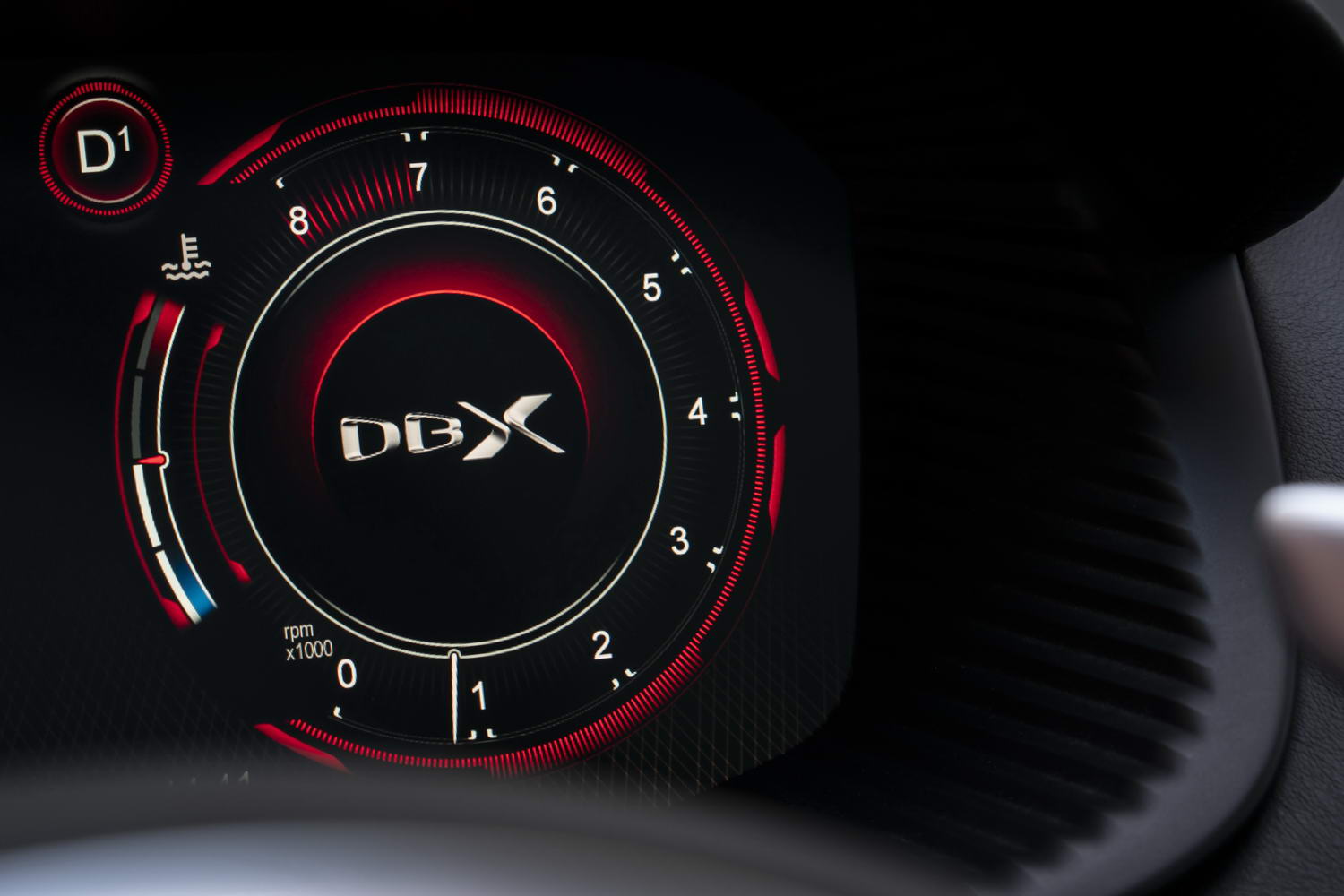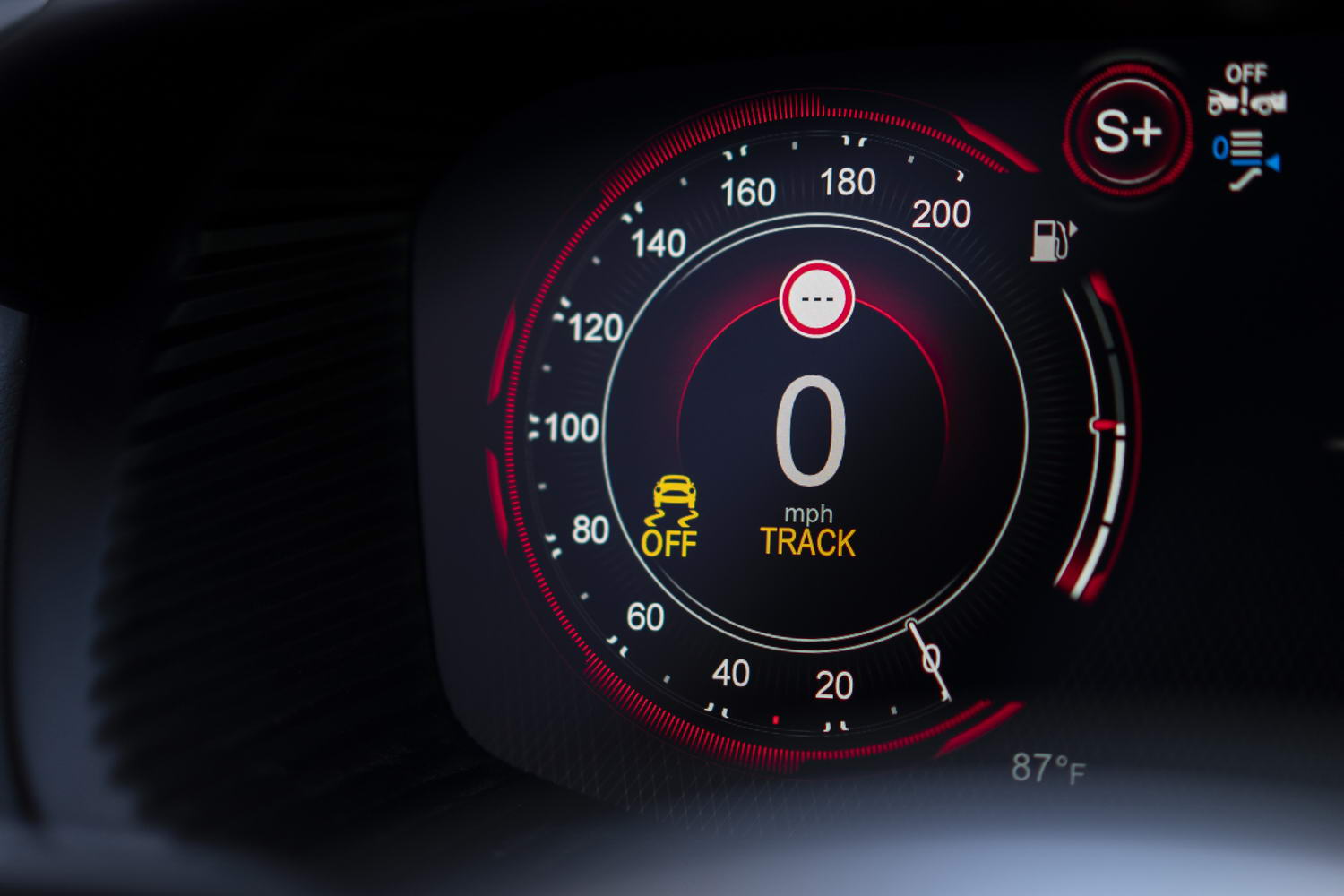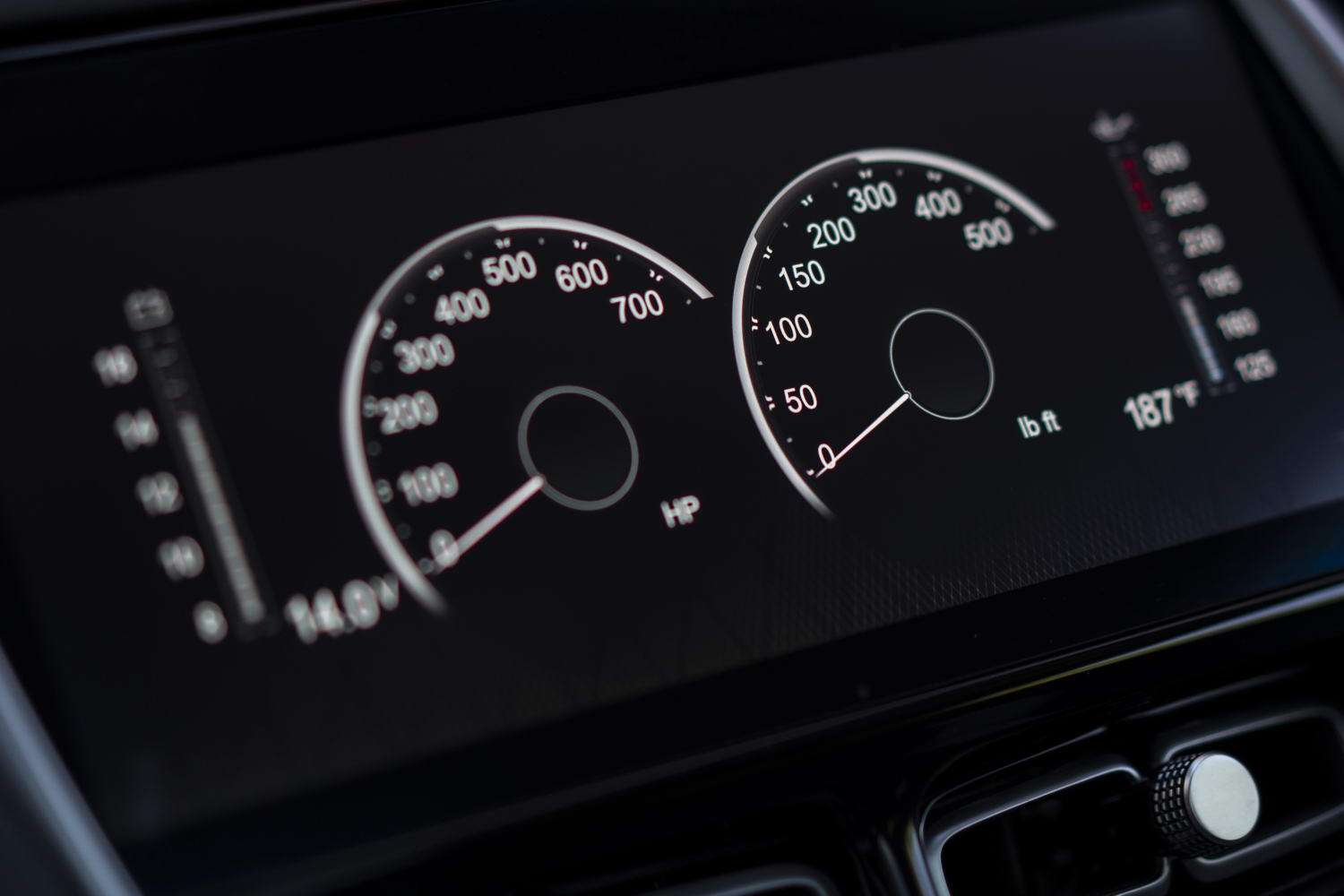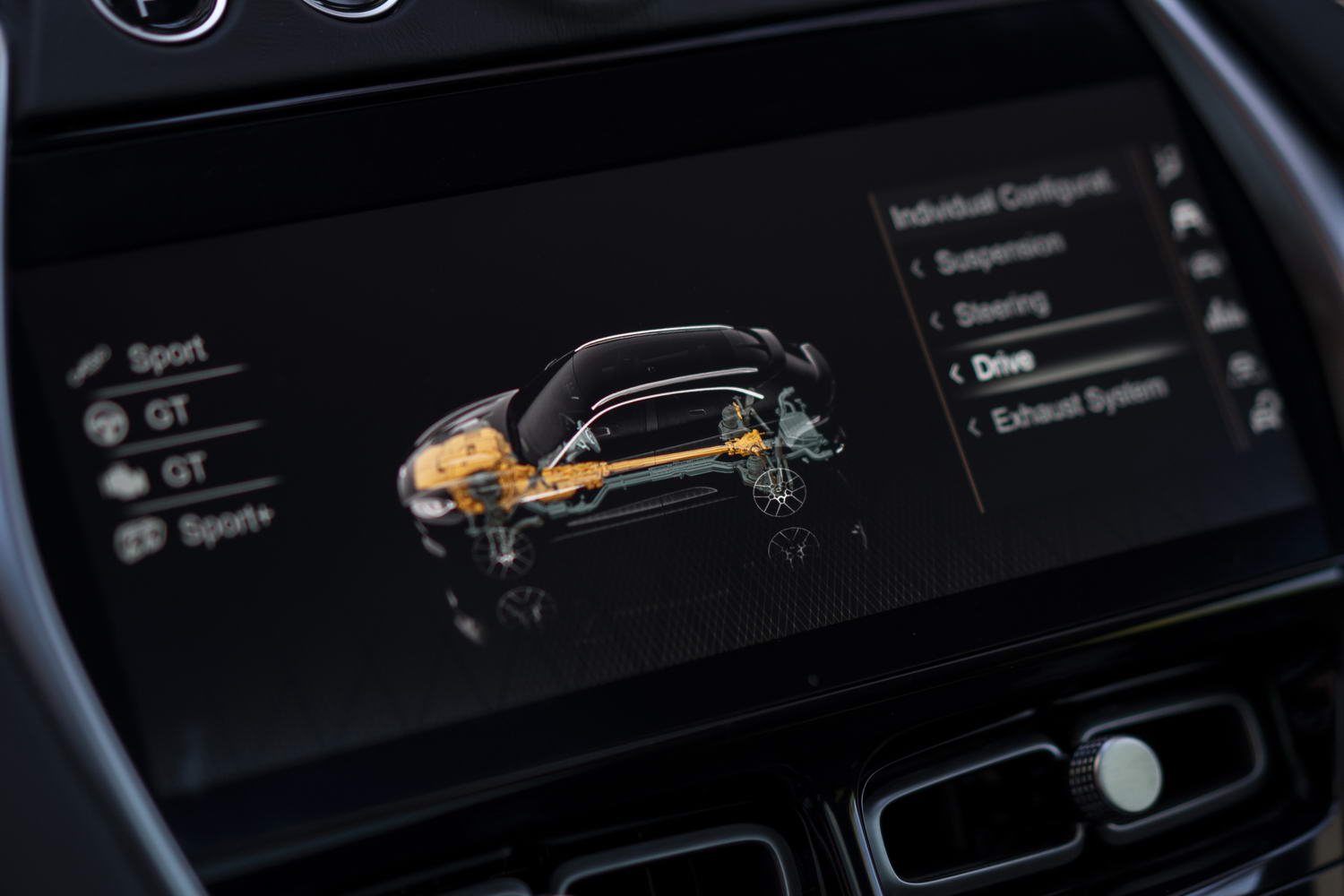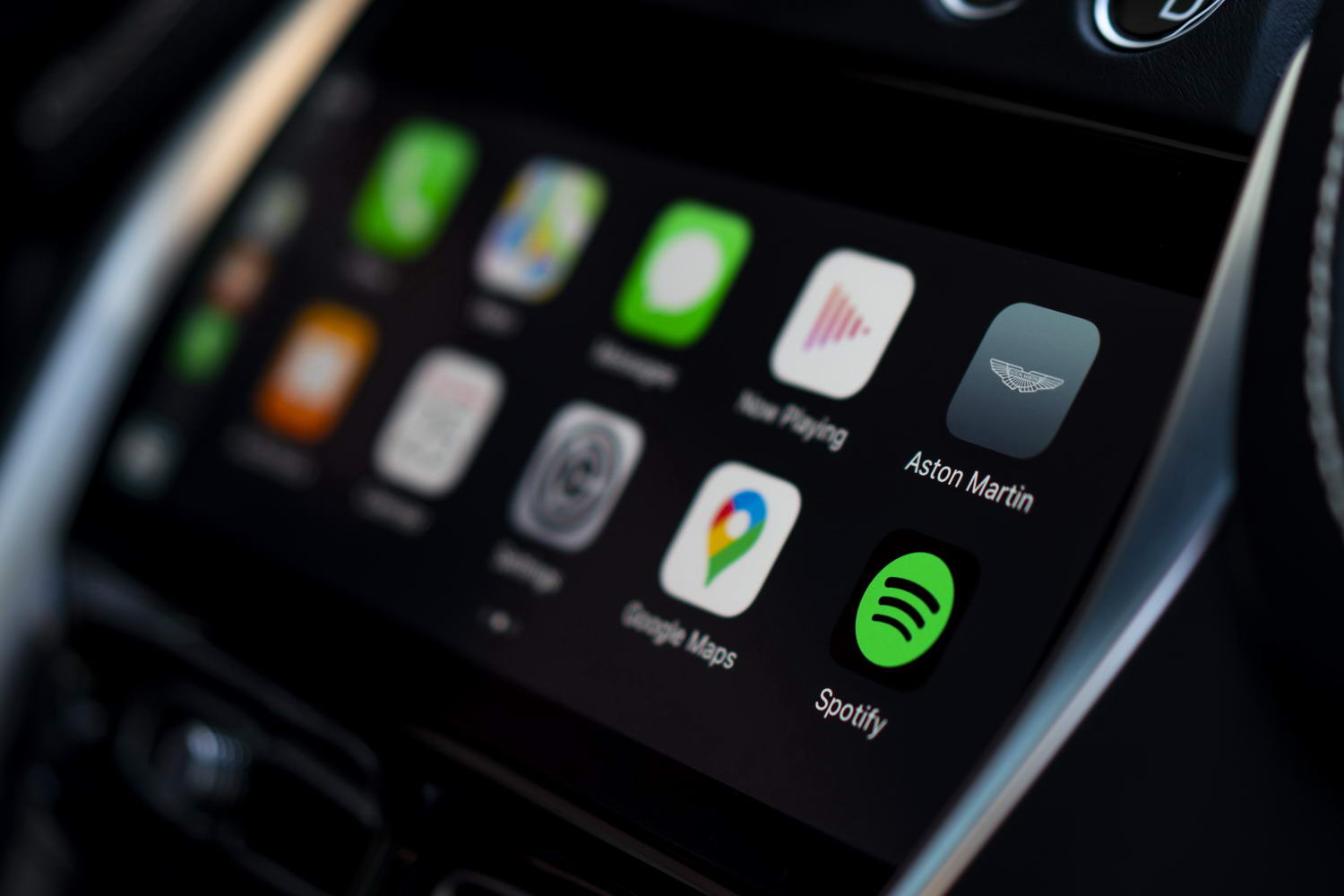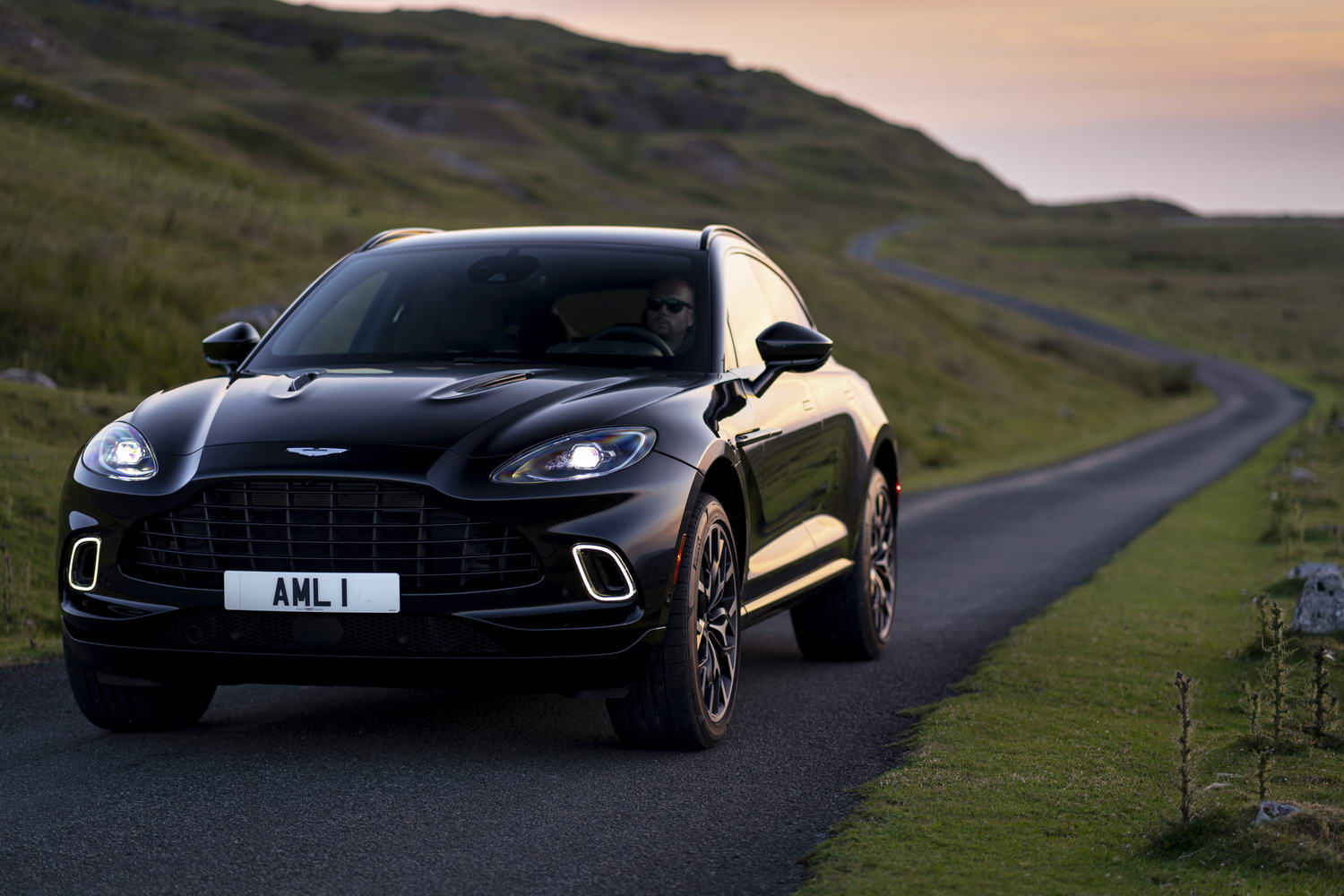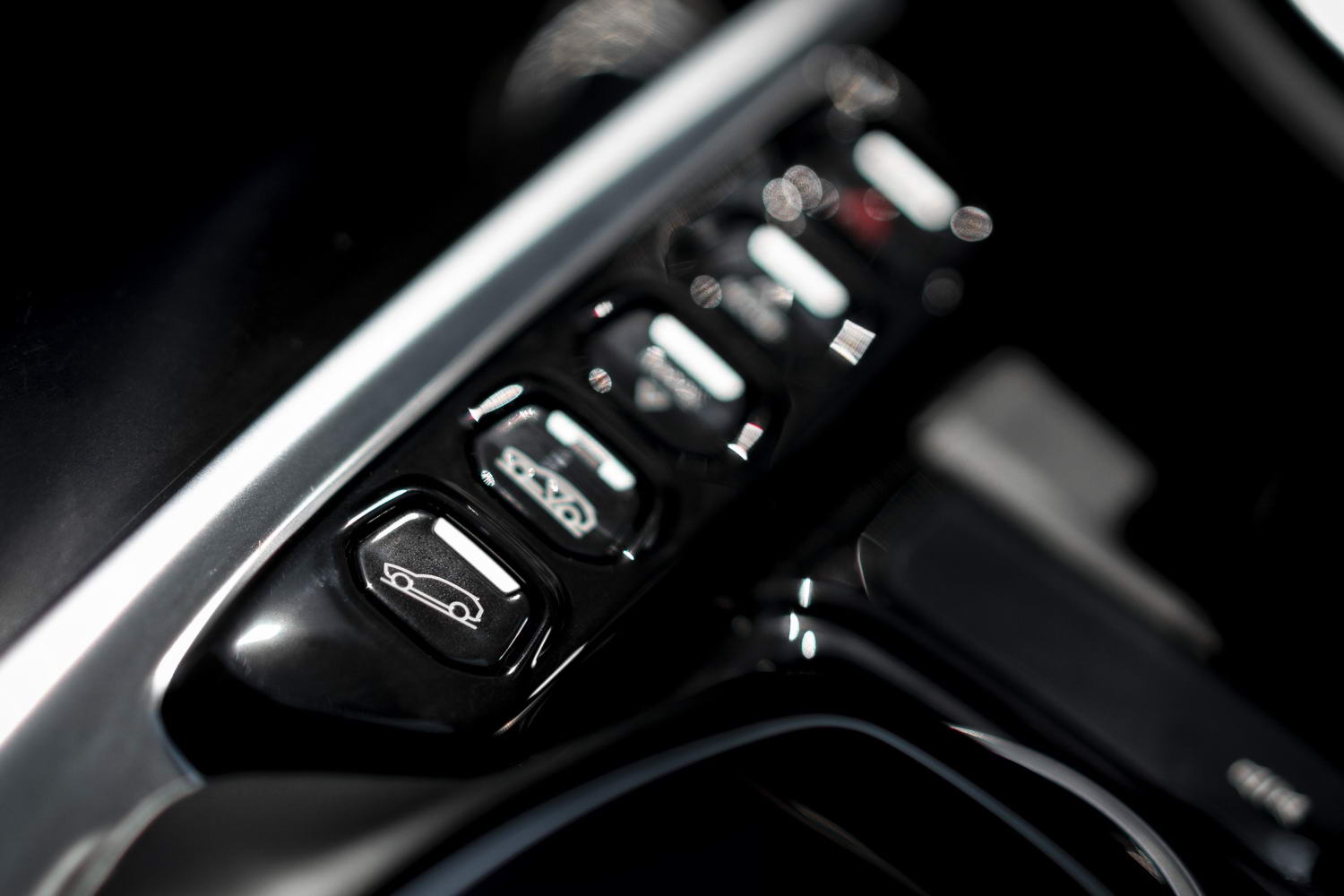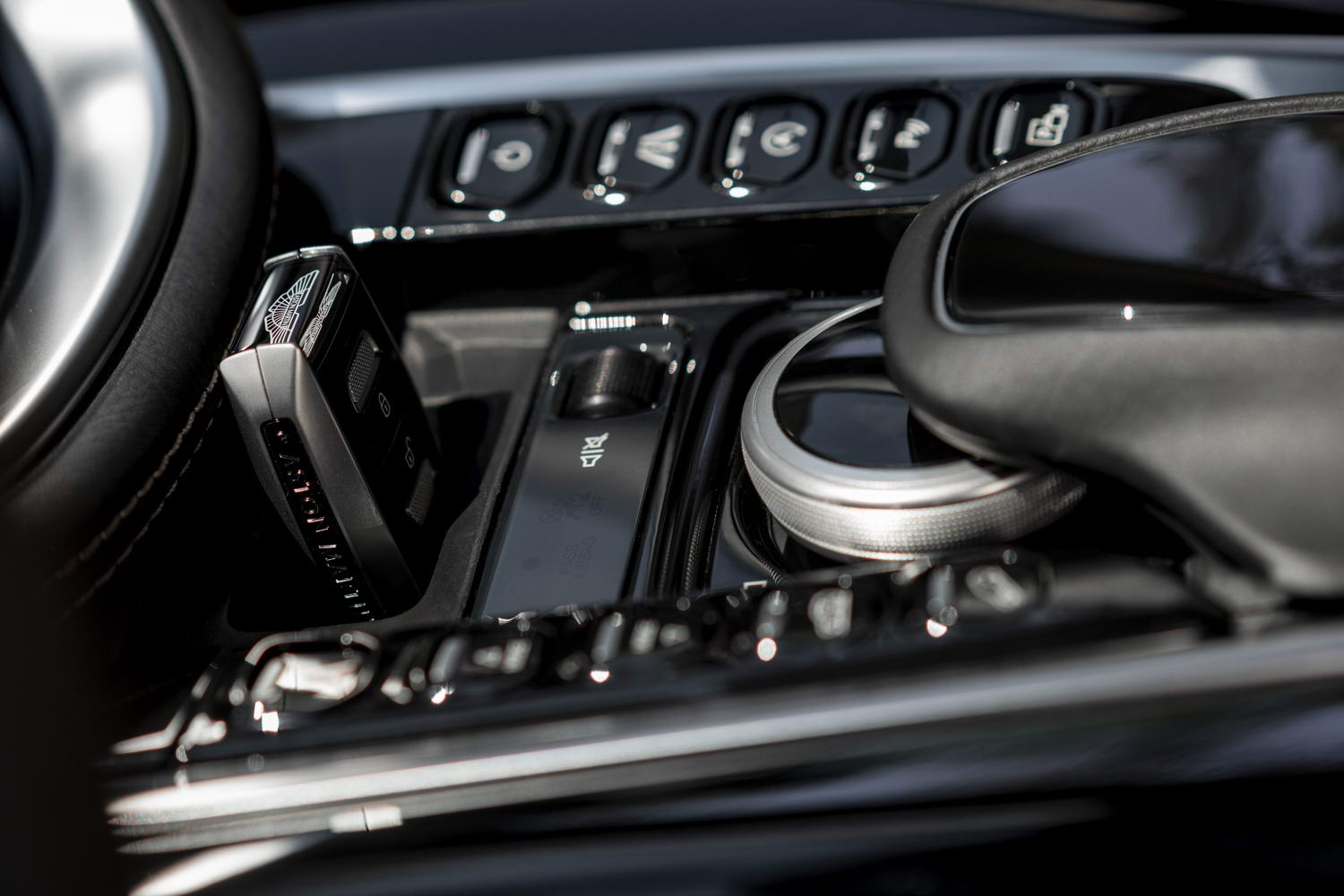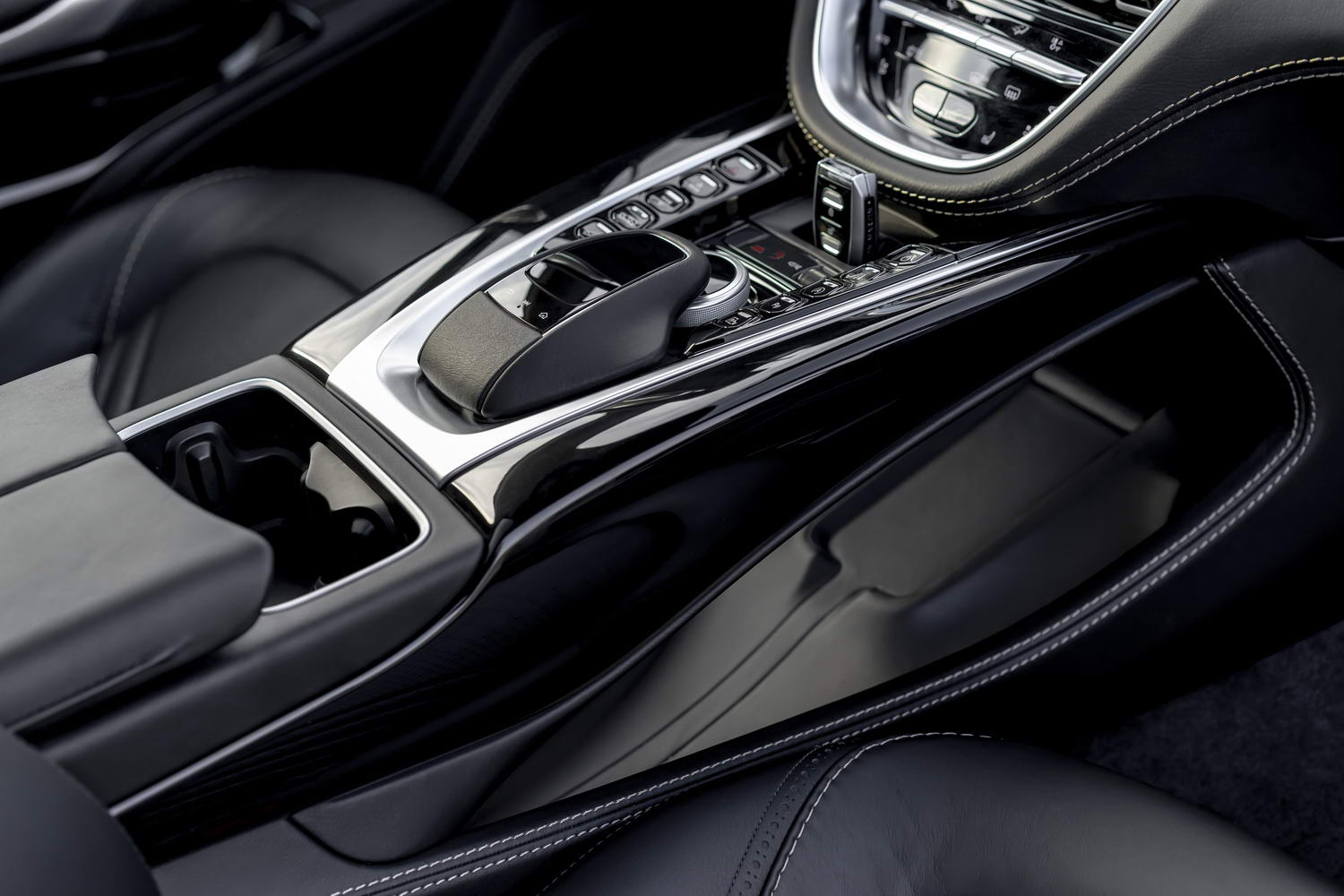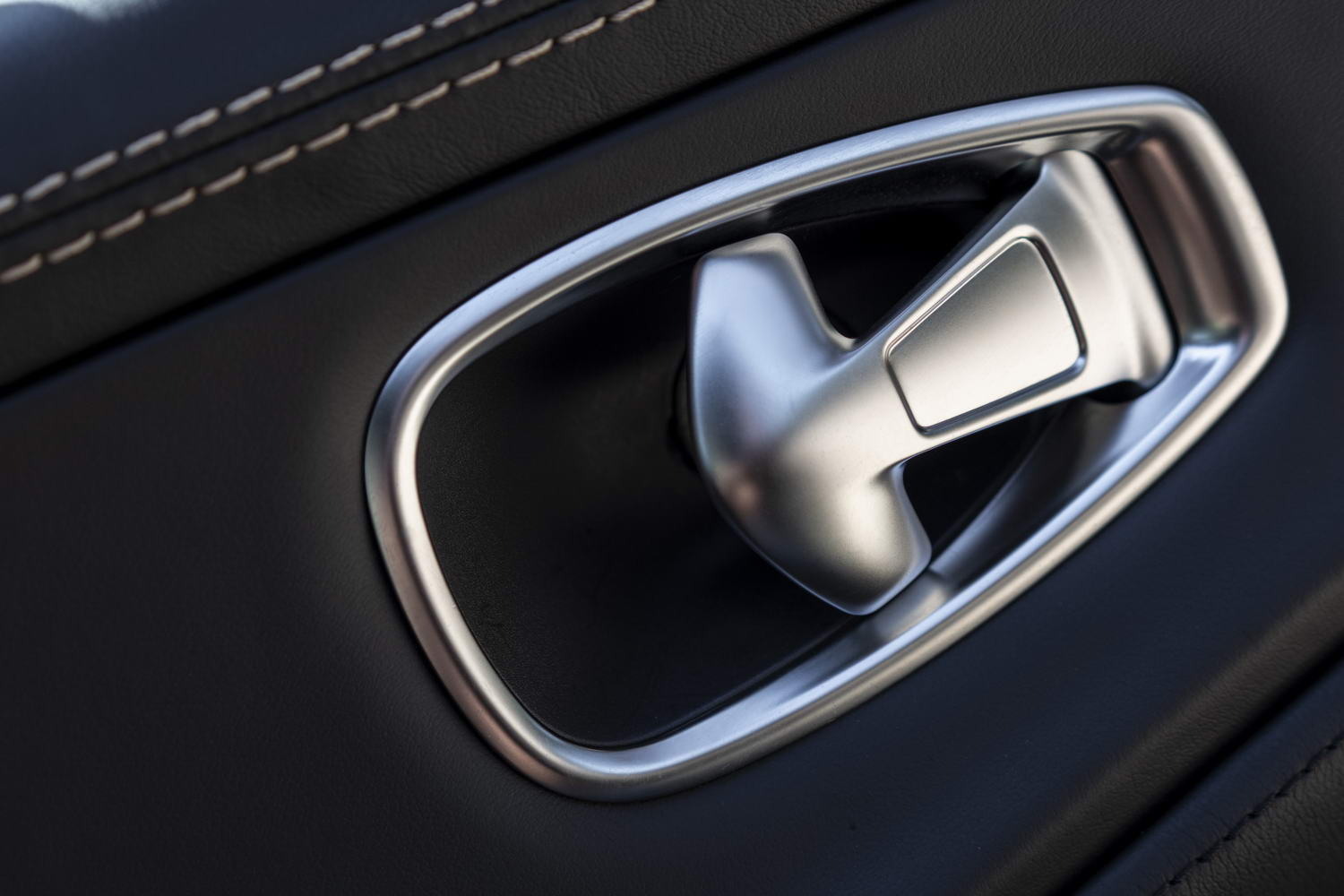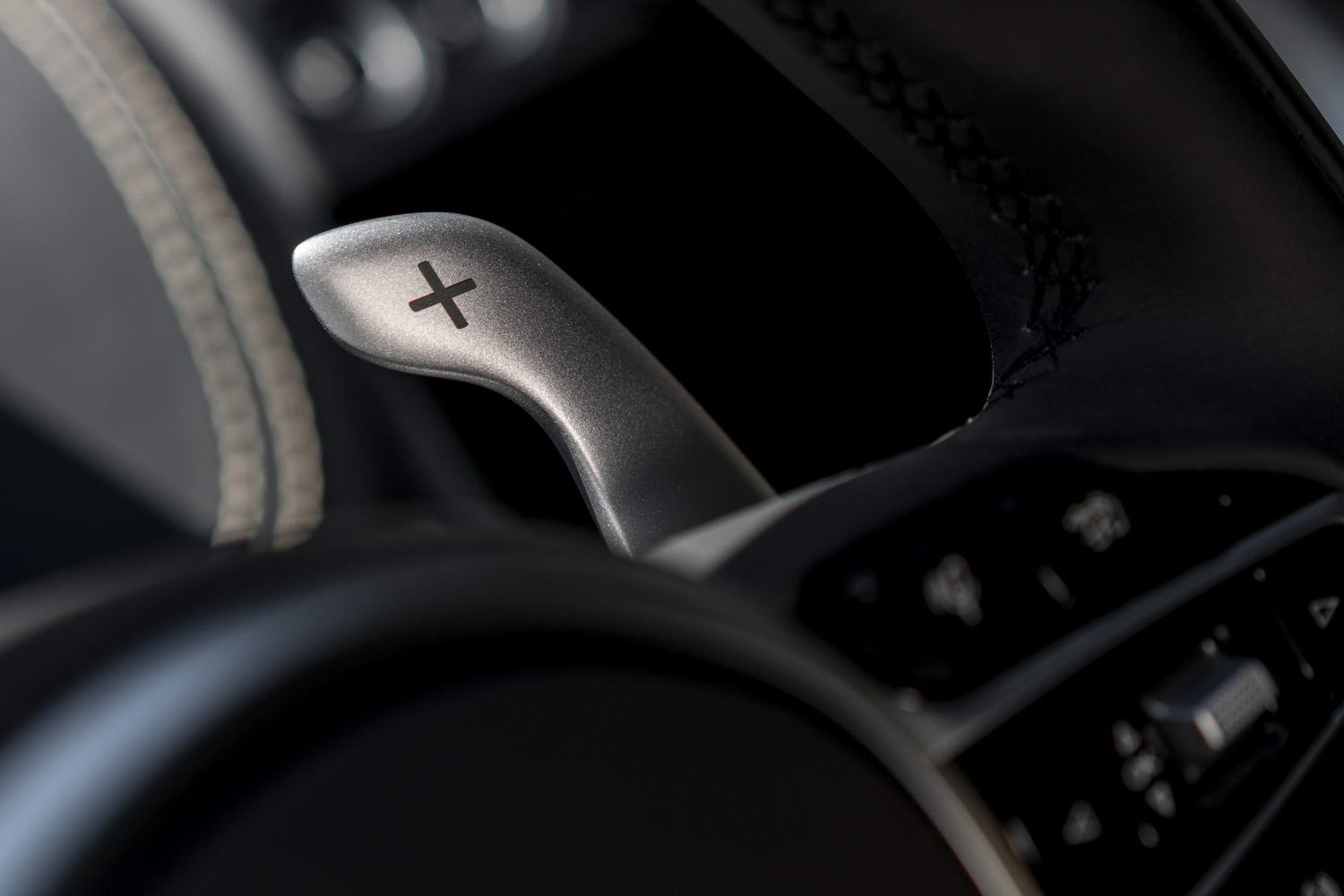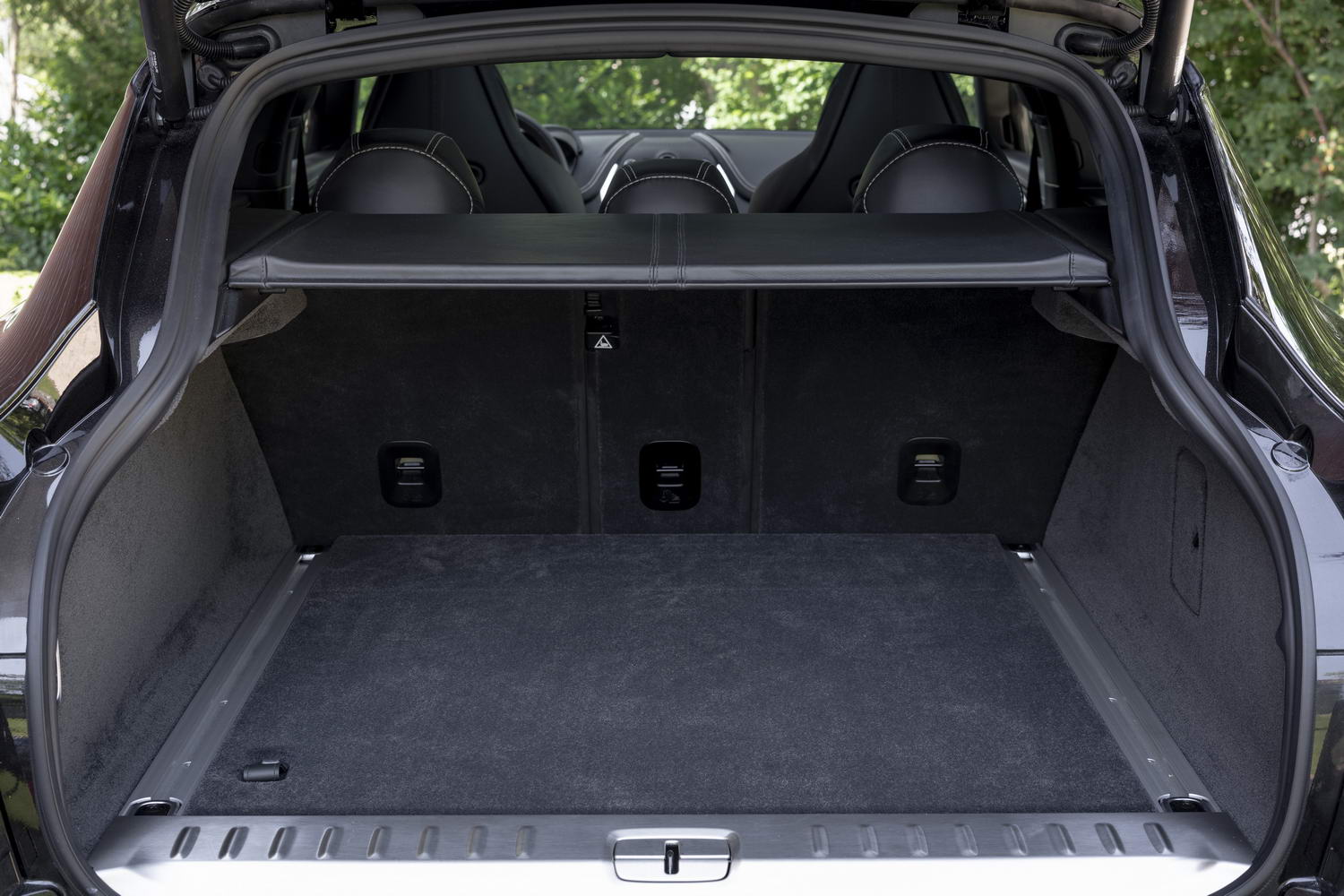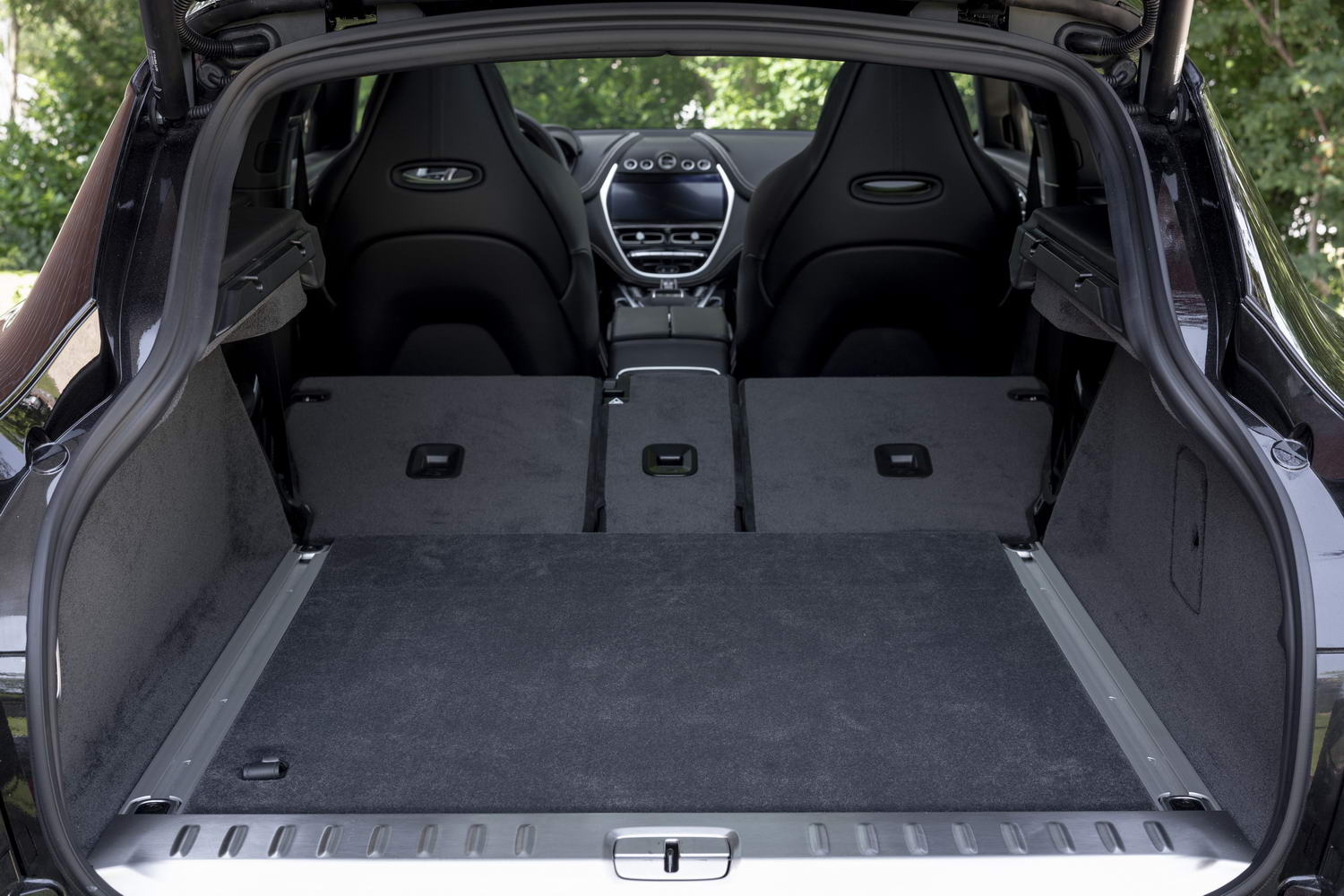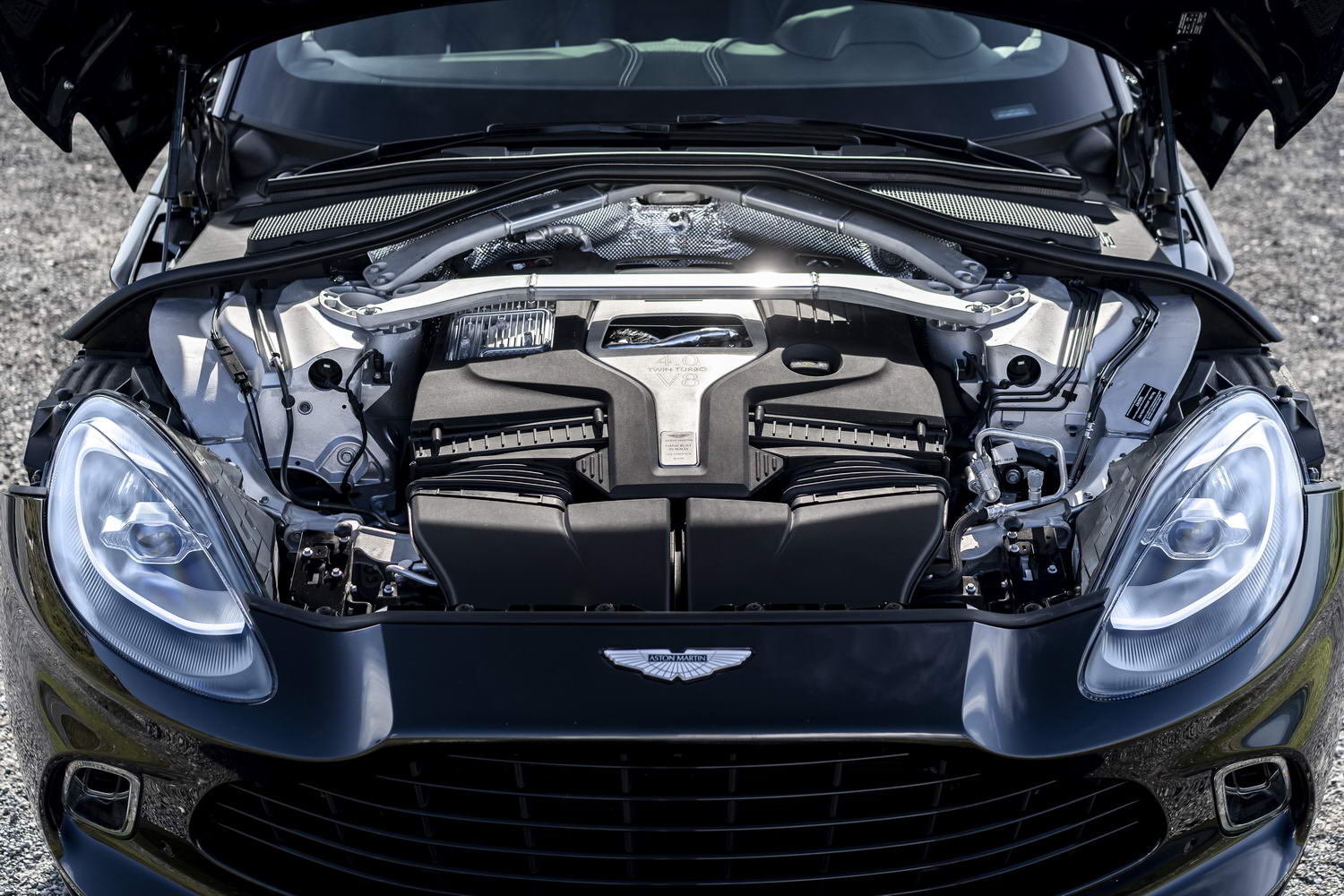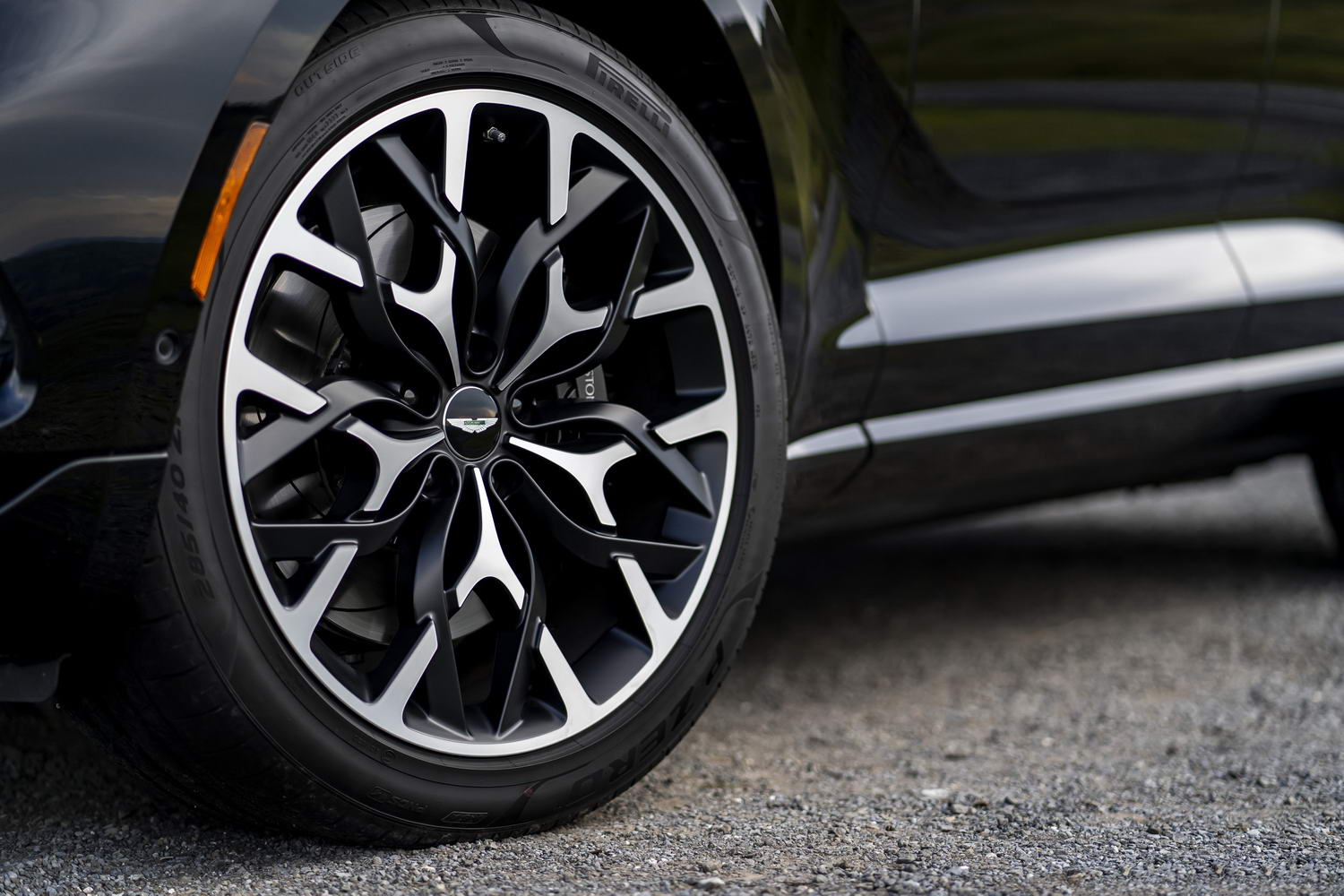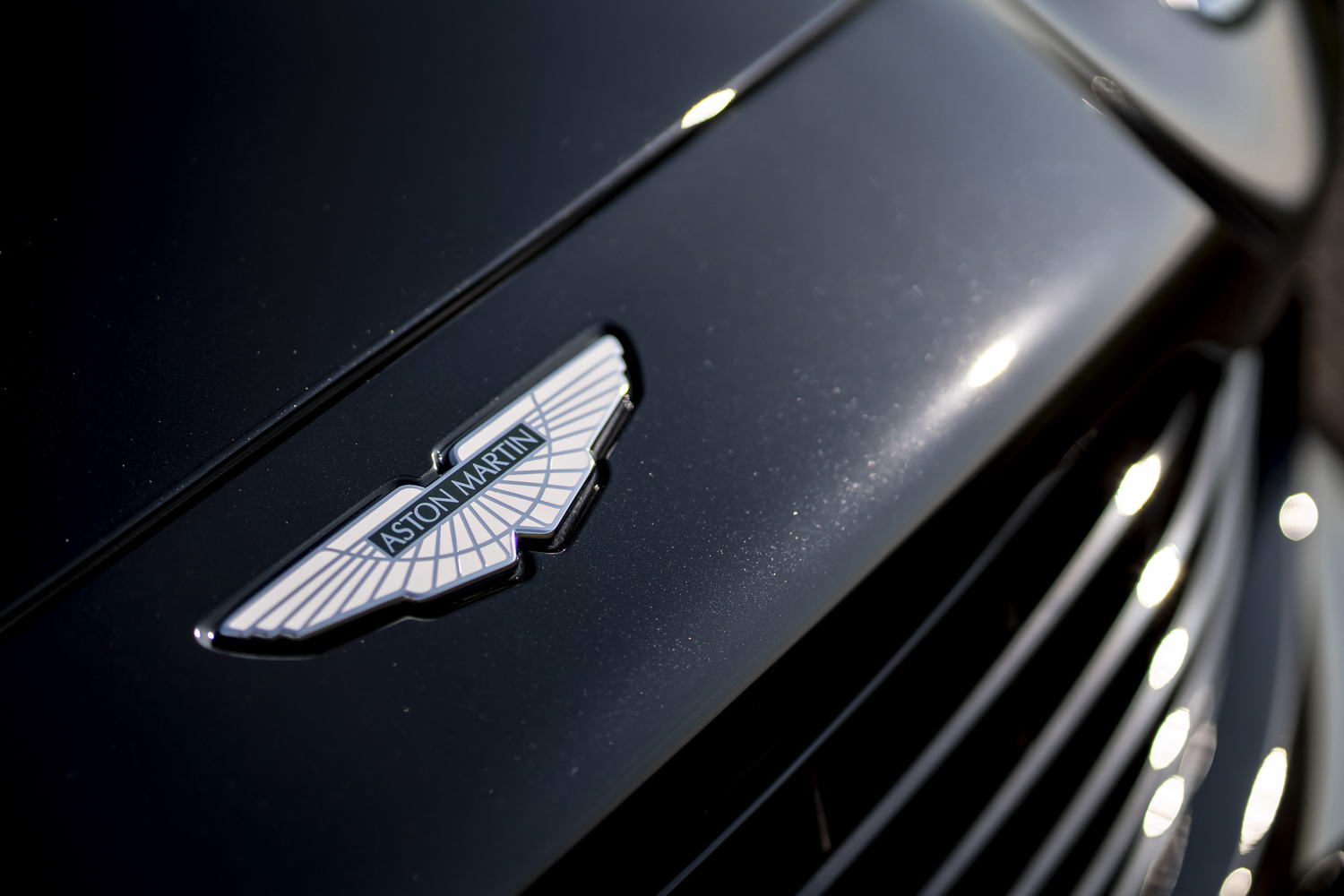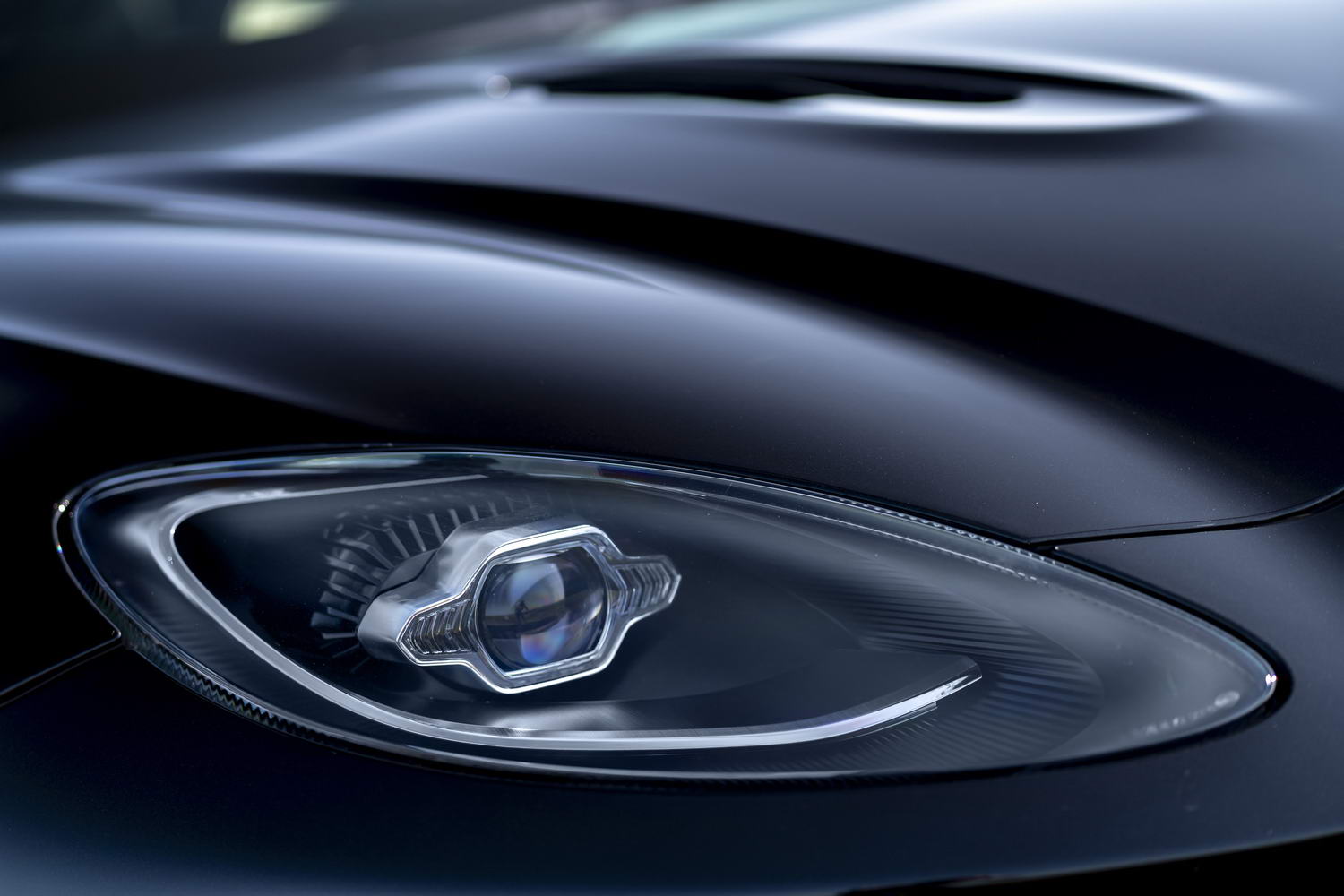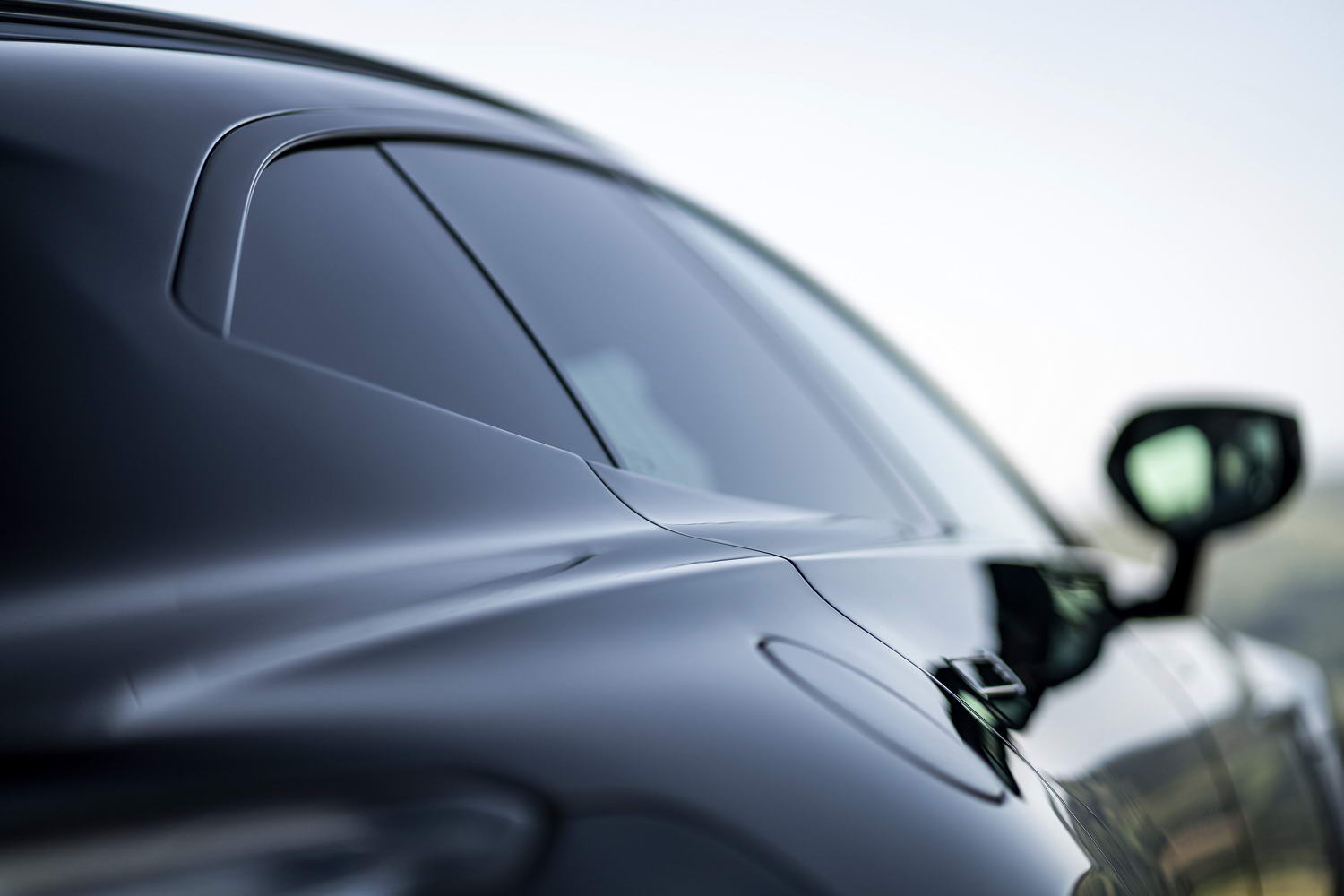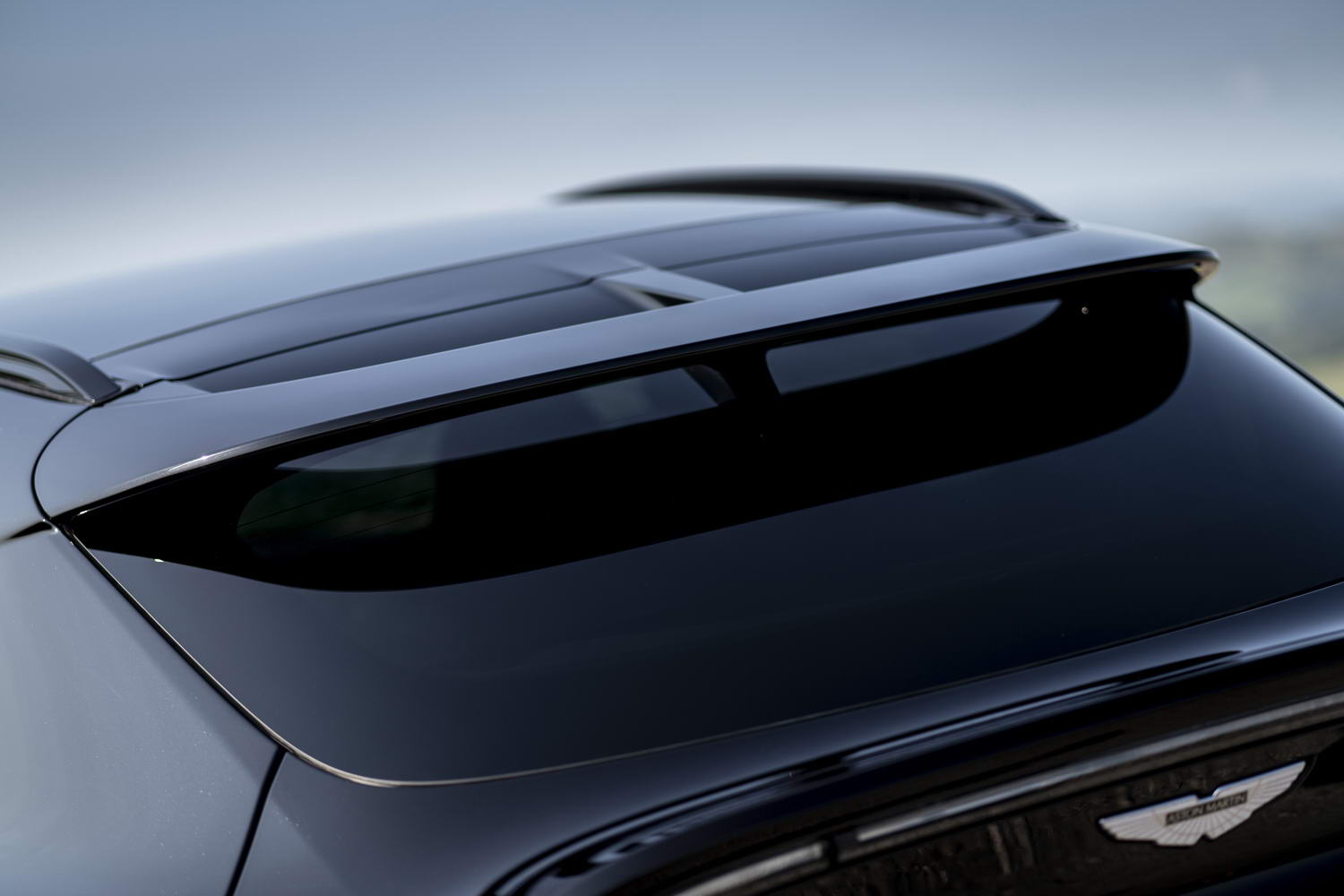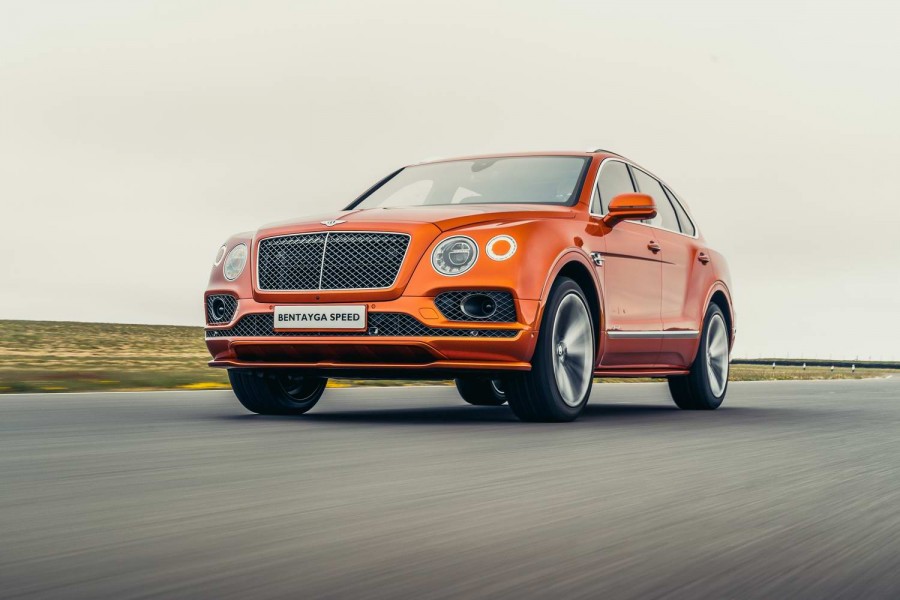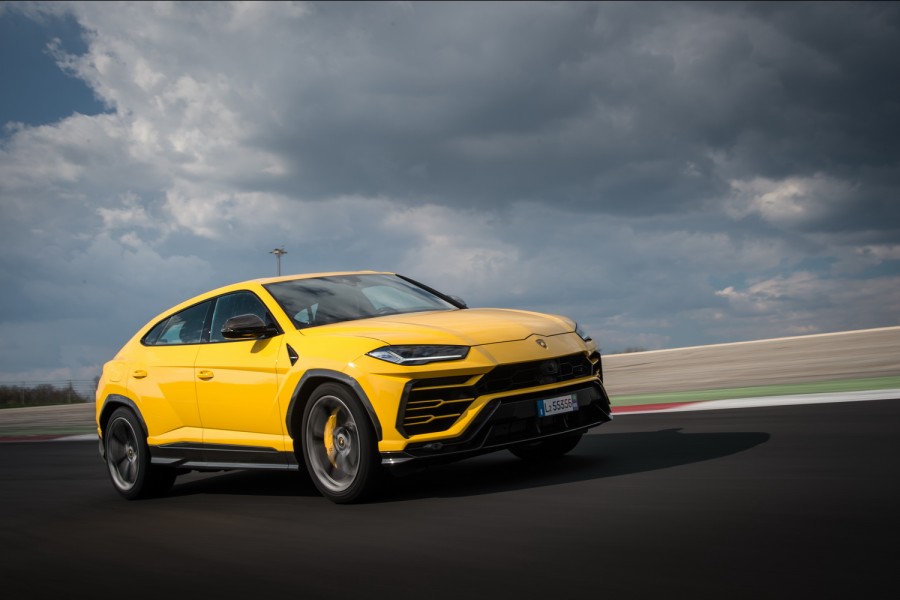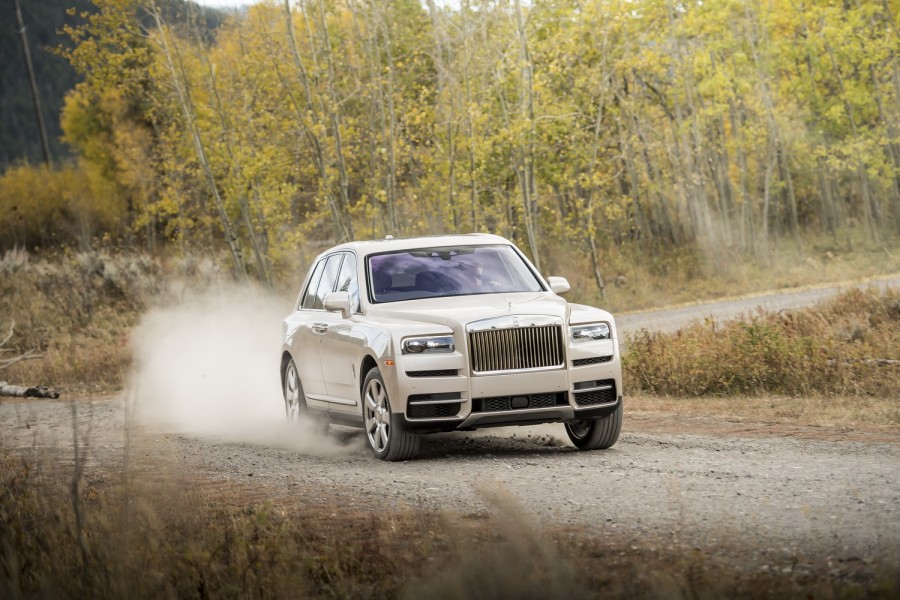One of the most crucial new cars of recent years, and a late entrant to the 'hyper-luxury SUV' marketplace, Aston Martin's DBX has a couple of huge jobs on its hands - one is to provide financial security for its parent company and the other is to tempt buyers out of the likes of the Bentley Bentayga, high-end Range Rovers and the Porsche Cayenne. The good news for fans of Aston Martin is that it would seem that Aston Martin has executed the end product to a sufficiently high enough level that both these Herculean tasks may well be achieved...
In the metal
Grafting Aston Martin's current styling cues onto the larger frame of an SUV will not win the DBX universal accord from onlookers, but of all these ultra-prestige SUVs to have appeared so far, we'd say the Aston is the prettiest example of the lot. It's a design that works much better in the metal and darker colour schemes than it does in photographs and lighter shades, but the drama of that Vantage-esque rear ducktail and the sloping rear screen cannot be ignored, while the front-end is pure Aston Martin with its DB-shaped grille and twin bonnet vents. Cleverly, a tapering passenger cabin and the upper spoiler/ducktail combo on the tailgate means that the DBX doesn't require a rear windscreen wiper, as the rear glass cleans itself in the airflow.
More tellingly, the big Aston SUV has a 3,060mm wheelbase in a body that's only 5,039mm long overall. This means a fantastic amount of interior space, without having to sport an exterior that is hulking and massive. Even when you're approaching it with the incredibly weighty, part-glass Aston Martin key in hand, the DBX never truly conveys its size and mass, but then you clamber into an interior where four very tall adults will easily get comfortable, thanks to what Aston claims is class-leading head- and legroom in the second row. There's also a whopping 632-litre boot and 40:20:40 split rear seats, although Aston Martin hasn't quoted what the ultimate cargo space of the DBX might be with only two of its chairs in play. Nevertheless, in terms of packaging and design, the Aston is an unqualified success.
What might let it down in the rarefied class it operates in is the standard of its interior finishing. Oh, don't get us wrong, this is a beautiful cabin by most SUV standards - the steering wheel is perfectly round here, instead of squared off as it is in the DB11, and there are plenty of eye-catching details, plus sumptuous leather hide on the wonderfully sculpted front seats. Everything also operates with a nice tactility (the DBX has very 'thick'-sounding clicks for the indicators, for instance, which is a natty touch to emphasise the overall quality) and the usual Aston Martin push-button gear selectors sit high on the centre console. It's just that, what with the perfectly-fine 10.25-inch Mercedes-sourced infotainment screen and its attendant rotary controller (it's not a touch-sensitive display), as well as fairly perfunctory switchgear (and a Mercedes column stalk, tut tut), you get the feeling that the cabin doesn't quite have the same show-stopping aura as the passenger compartments found in Bentley, Lamborghini and Rolls-Royce rivals. Not to mention the Porsche Cayenne, which has a fabulous interior for a considerably lower price.
Driving it
Aston provided us a test of the DBX that involved some off-roading, a bit of track time and then an extended session on public roads to get the best flavour of this SUV, which has to put the focus on 'sports' before it ticks off the box marked 'utility'. Nevertheless, for the first time ever, Aston has had to think about things like ground clearance, wading depths, breakover angles and towing capabilities.
With such a broad remit of operational parameters in front of it, you might be tempted to think Aston has dropped the ball somewhere when it comes to the DBX's kinematics, but - if the company has - then we're struggling to see precisely what is wrong with it. First of all, off-road: most owners, and there have been more than 2,000 DBXs already ordered by eager punters, will never show the Aston's all-terrain tyres anything more than a wet field, at most, but it can do steep, rubbly ascents and the Hill Descent Controlled descents with supreme ease too. This is because it has two off-road settings that lift its suspension by up to 45mm, providing it with 235mm of ground clearance on its highest stance. Factor in 500mm of wading depth, approach, departure and breakover angles of (respectively) 22.2-, 24.3- and 15.1 degrees, and a maximum towing capacity of 2,700kg, and you can see the DBX easily accomplishes its 'lifestyle' tasks with some aplomb. Even if it's not going to give a Range Rover any sleepless nights with its all-terrain and country-set abilities, we grant you.
Then, on track, the Aston's clever underpinnings mask its 2,245kg bulk, which is heavy in the grand scheme of things but trim for a large, plush SUV like this - a bonded aluminium frame and aluminium/composite body panels do much to keep the weight off the Aston Martin. The DBX has adaptive, triple-volume air suspension teamed to a 48-volt electric anti-roll control (eARC) set-up, the former of which drops the car 15mm in Sport mode and then another 15mm in Sport+, while the latter has up to 1,400Nm of anti-roll force per axle. Meanwhile, the 550hp/700Nm 4.0-litre biturbo V8 petrol engine delivers its grunt to all four wheels through a nine-speed torque-converter auto and a couple of differentials, including an active centre diff and an electronically controlled rear limited-slip item. This allows for torque vectoring front to rear, as well as across the back axle, and the Aston has a rear-biased all-wheel-drive system anyway to make it feel more rear-wheel drive than four-wheel drive.
Coupled to beautiful steering - that's weighty, informative and quick to respond, with fabulous consistency across the lock - what you end up with is an SUV that far from disgraces itself on the tight, nuggety confines of Silverstone's Stowe circuit. It resists understeer remarkably well, no matter how hard you fling it into sharp corners and hairpins, and while it doesn't quite corner flat, the level of lean that is perceptible in the DBX is useful in letting you know what's going on with weight transfer and precisely where the limits of grip are. Given that the head of chassis development at Aston Martin is Matt Becker, the man who once made Lotuses so brilliant to drive, it probably shouldn't be a surprise that the DBX is so adept on track... but, for a first-time SUV product, it really is a pleasure to be able to report its dynamic acuity for circuit driving. Oh, and the brakes are epic; normally one area you can feel a heavy vehicle is through the stopping pedal when you're travelling at speed, but the Aston's 410mm front/390mm rear steel discs, gripped by six-piston callipers up front, perform admirably time and time again, with little evidence of fade.
Where the Aston truly earns its spurs, though, and puts itself right near the top of our list for premium SUVs, is the way it operates on road. In regular GT mode, the ride quality (on standard-fit 22-inch wheels) is exemplary, thanks in no small part to 40-profile front and 35-profile rear tyres, while noise suppression is also first rate. Its nine-speed auto slushes gearshifts in immaculate fashion, and the throttle response and steering are both right on the money - neither is too fuzzy nor light, and yet conversely the DBX is not permanently rabid nor hard to control in regular traffic flow. Visibility is good in all directions, including through that heavily raked rear screen, while the aerodynamics perform a grand job of preventing any whistling or ruffling around the Aston's glasshouse; acoustically insulated glazing also helps here. And yet, when you're off the motorway and you up the pace, which won't be difficult to do because that AMG-sourced V8 provides a thumping turn of speed and a magnificent soundtrack when you need/desire them, the SUV's body remains tautly controlled in the corners, while grip and traction are both unimpeachable. It's fair to say that this Aston feels incredibly special to drive in a wide variety of situations, despite its larger-bodied frame.
What you get for your money
Although there are personalisation options that will further push the Aston Martin's price up, and while we accept that €280,000 is a huge sum of money for an SUV, the DBX has its prestige status, its top-level chassis engineering and a generous standard equipment list to mitigate the asking price to a significant degree. Included in the purchase figure of the Aston SUV are items such as the full panoramic roof, Alcantara headlining, full Caithness leather upholstery, 12-way electrically adjustable front seats with a three-position memory function, heated seats front and rear, keyless entry and go, three-zone climate control, 64-colour and dual-zone ambient lighting, parking sensors all round with a 360-degree camera system and deploying reversing camera, a powered tailgate, bi-LED headlights with Auto High Beam, a 12.3-inch TFT instrument cluster, the 10.25-inch TFT infotainment system with HDD satnav, Voice Control, Bluetooth, DAB and Apple CarPlay connectivity, four USB ports and three 12-volt charging sockets dotted around the cabin, and an 800-watt, 14-speaker Aston Martin Premium Audio System, among more. On top of this, the standard safety specification should incorporate adaptive cruise control with a speed limiter, Forward Collision Warning, Autonomous Emergency Braking with pedestrian detection, Lane Departure Warning, Lane Keep Assist, Lane Change Warning, Rear Cross-Traffic Warning, Traffic Sign Recognition, Blind Spot Warning, Door Opening Warning, a plethora of airbags and two ISOFIX child-seat attachments in the second-row seats.
Summary
Aston Martin has a lot riding on the DBX's sculpted shoulders, and some reckon it is pinning its hopes too much on this SUV driving global sales. However, as Aston itself would argue, most of its customers who buy its sports cars also have an SUV of some sort in their amply stocked garages, and now they have the option of keeping their selection 'in-house' by choosing the DBX. If they do, what they have here is a super-talented, deeply impressive machine, which doesn't feel like a marque's first attempt at an SUV but rather something that has been honed to near-perfection over decades. If you like the Aston's exterior styling and you think its sporty if somewhat underplayed interior aesthetic is more than accounted for by its superb practicality, then you'll find little wrong with the way the DBX drives. It's a marvellous creation from Aston Martin, all things considered.

